Your Guide to Butterfly Pea Flower: From Magic Teas to Blue Lattes
I first got my hands on butterfly pea flower years ago, not in some trendy cafe, but in a small community garden way up in northern Thailand. An older woman there showed me how this humble vine, with its crazy blue blossoms, was so much more than just a pretty drink. It was a natural dye for fabrics, a staple in traditional herbal remedies, and even a crop they used to keep the soil healthy. It taught me something important: to really get an ingredient, you have to look past the hype.
In this article
After years of playing with botanicals in both classic and modern kitchens, I’ve watched this flower go from a local secret to a global star. So, this guide is everything I’ve learned along the way. It’s here to show you how to find the good stuff, brew it perfectly, and actually use it in your own kitchen.
Oh, and let’s get the big question out of the way first: Is it caffeinated? Nope! It’s a completely caffeine-free herbal infusion, so you can enjoy it any time of day.
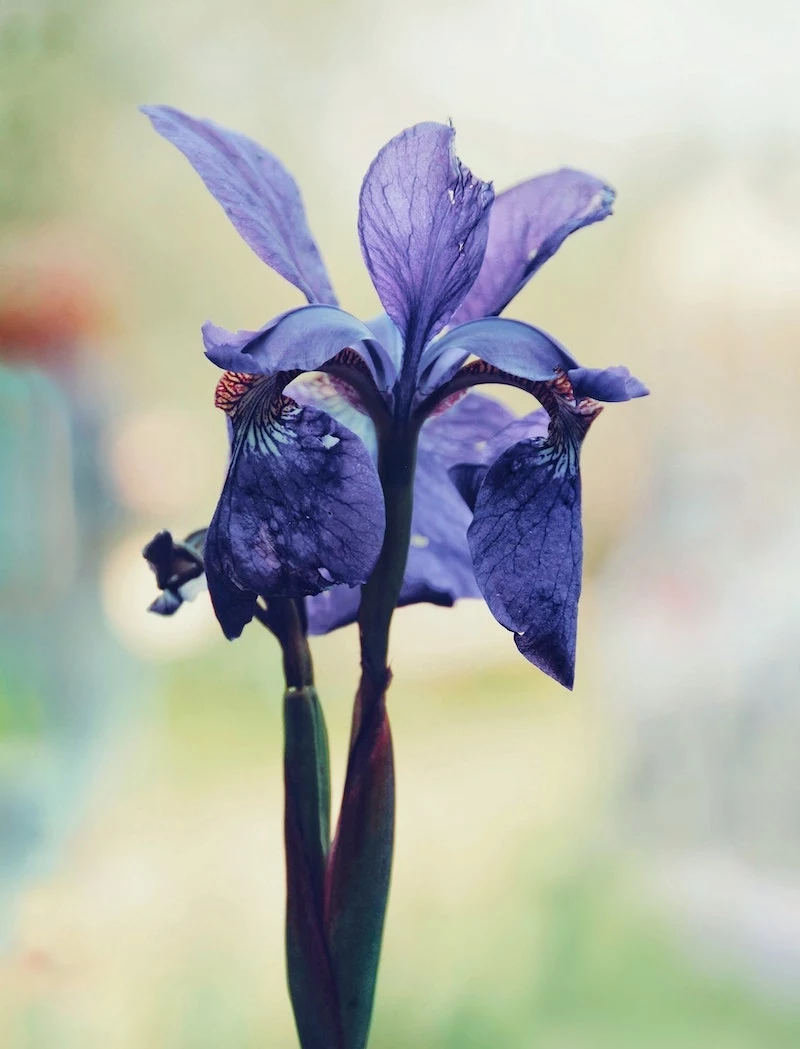
The Magic Behind the Color
The butterfly pea flower comes from a plant in the pea family, a legume that’s been grown in Southeast Asia for ages. Long before it was famous for color-changing cocktails, it was busy helping farmers by adding nitrogen back into the soil. A true workhorse of a plant.
But let’s talk about its party trick—that incredible color change. It’s not magic, just some fun, simple chemistry. The deep blue hue comes from antioxidants called anthocyanins. These pigments are super sensitive to changes in pH, which is just a fancy way of measuring how acidic or alkaline something is.
Here’s how it works in plain English:
- When it’s neutral (like in plain water): You get that deep, vibrant blue.
- When you add acid (like a squeeze of lemon or lime): The pH drops, and the molecular structure of the pigments changes. Suddenly, you’re looking at a brilliant purple or fuchsia. This is the effect everyone loves.
- When you add a base (like a tiny pinch of baking soda): The pH rises, and the color can shift toward green or even a murky yellow. Honestly, this isn’t great for drinks, but it’s good to know if you ever try baking with it!
A quick pro tip: The mineral content in your tap water can mess with the color. If your water is really hard (more alkaline), your blue might look a little dull. For the most electric blue, I always recommend using filtered water. It makes a surprising difference.
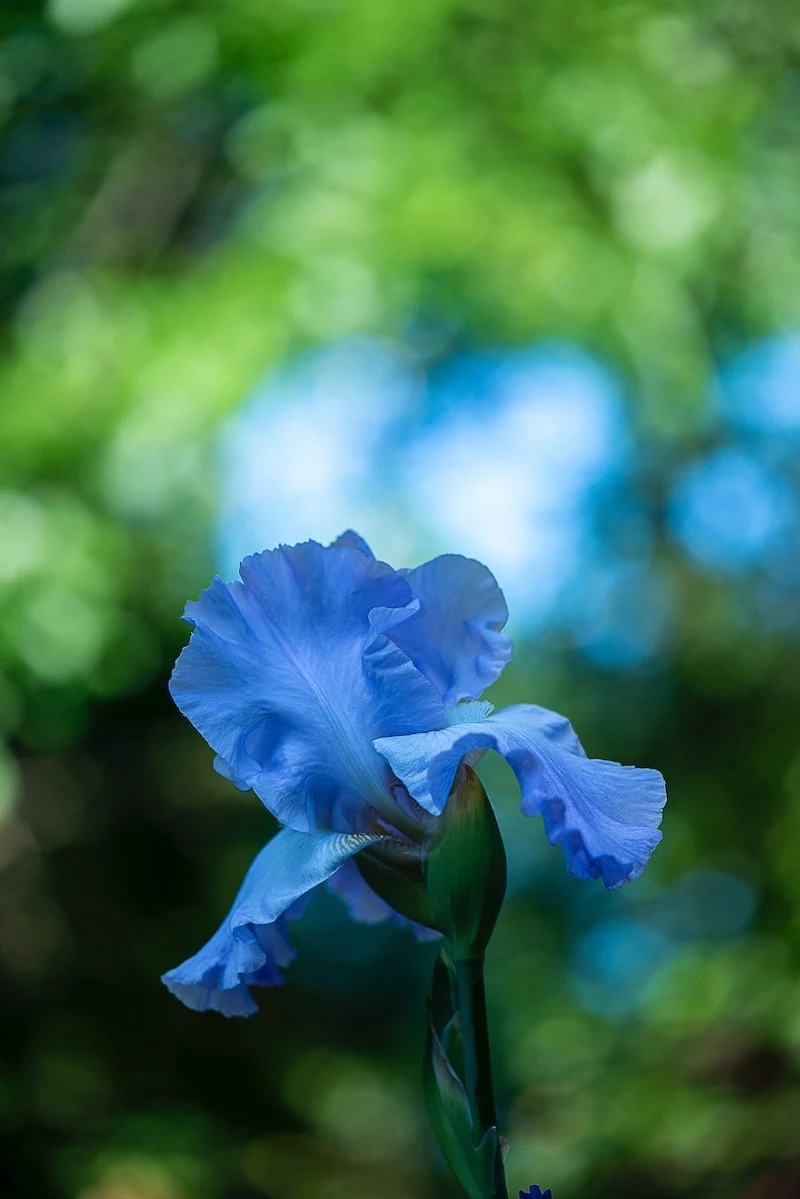
Getting the Good Stuff: Sourcing and Storing
The quality of your drink starts with the flowers you buy. I’ve seen it all, from dusty, broken bits to gorgeous, hand-picked whole blossoms. Knowing what to look for is key.
Whole Flowers vs. Powder
For teas and infusions, I always go for dried whole flowers. You want to see whole, unbroken blossoms with a deep indigo color, not grayish-blue dust. A good batch will have a faint, earthy scent, kind of like fresh peas. If it smells musty or is full of stems, skip it. Broken bits can make your tea cloudy and a little bitter.
Powder, on the other hand, is perfect for lattes, smoothies, and baking—any time you want to mix the color right in. A high-quality powder should be super fine and electric blue. Be wary of powders that look dull or have white specks; those could be fillers like rice flour. It never hurts to ask a supplier if their powder is 100% pure.
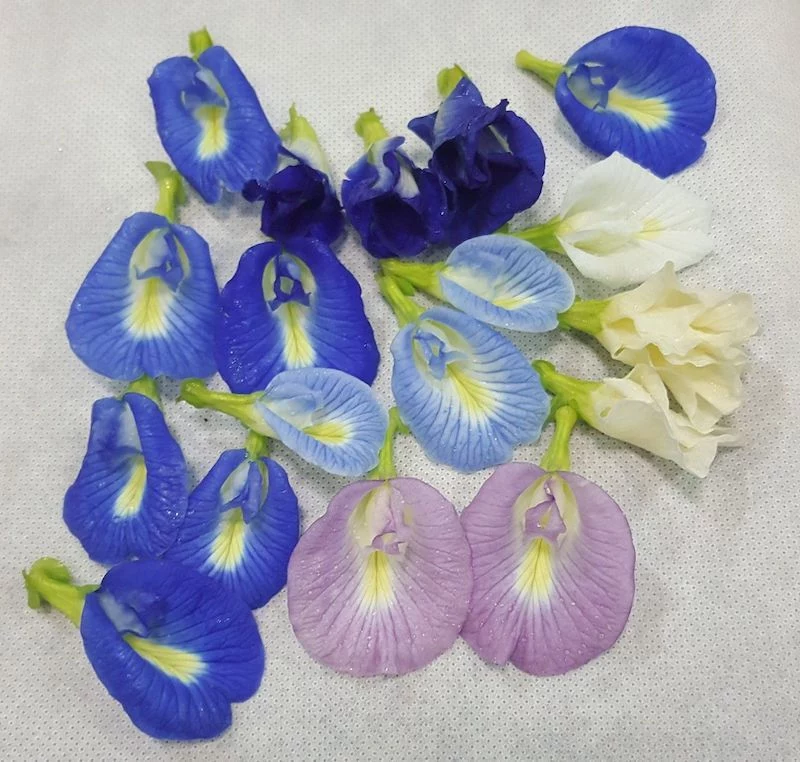
Where to Buy and How to Keep It Fresh
Your best bet is to check out your local Asian market first; they often have it for a great price. Online, look for suppliers specializing in organic teas or herbs. Since you’re steeping the whole flower, you really want to avoid any pesticides. You can expect to pay between $10 and $20 for a 50g bag of dried flowers, which will honestly last you a very long time.
Heads up! Light and moisture are the enemies of that beautiful blue color. Store your flowers or powder in an airtight, opaque container (like a tin or a dark glass jar) in a cool, dark cupboard. Stored right, it’ll stay potent for at least a year.
Brewing 101: Finding Your Perfect Method
How you brew this flower completely changes the final result. Do you want a sweet, traditional cooler or a super-smooth base for a cocktail? Here’s the breakdown.
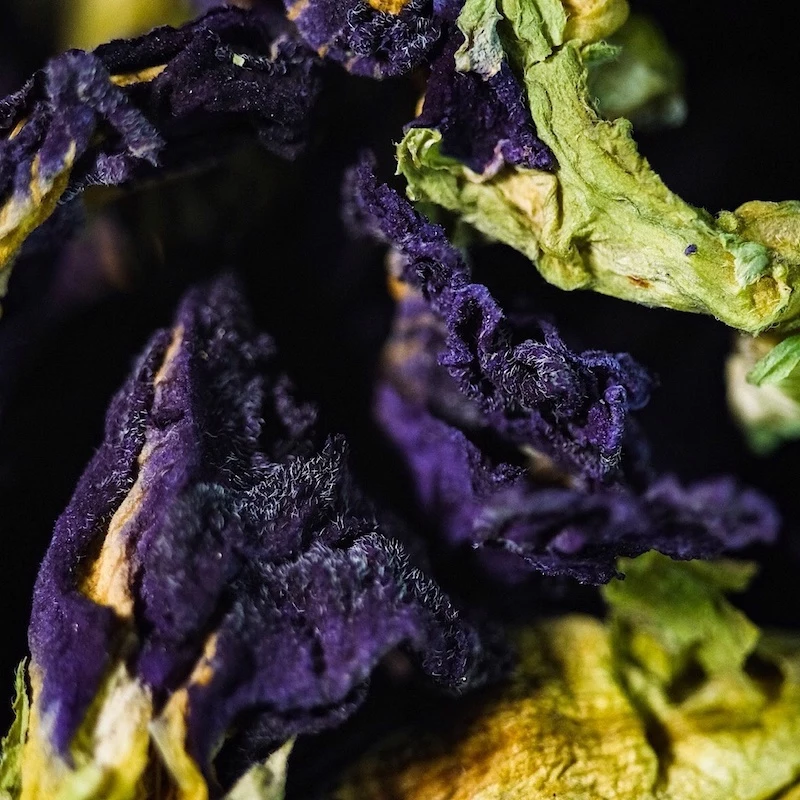
The Traditional Thai Cooler (Nam Dok Anchan)
This is the real deal, the refreshing drink I first learned to make. It’s lightly sweet and served ice-cold. You’ll need about 15-20 dried flowers, 4 cups of water, and a bit of sugar or honey. You basically make a simple syrup, steep the flowers separately in hot (not boiling!) water for 5-7 minutes, then combine the two over ice. The best part? You serve it with a lime wedge on the side, so the person drinking it gets to squeeze it in and make the magic happen themselves.
The Perfect Hot Tea
For a simple, clean hot tea, precision helps. Use water that’s just off the boil, around 200°F (93°C). Any hotter and you risk a flat, vegetal taste. A good ratio is 5-7 flowers per cup of water. Steep for 3 minutes for a light sky-blue or 5-7 minutes for a deep indigo. I wouldn’t go much longer than that. The flavor itself is very mild—a little earthy and woody—which makes it a great canvas for other flavors like ginger, mint, or lemongrass.

For a total beginner, here’s a quick win: Just steep 5 flowers in hot water for 5 minutes and add a squeeze of lemon. You’ve just made magic in a cup!
The Pro Method: Cold Brewing
My absolute favorite technique is cold brewing. It’s a trick I borrowed from my specialty coffee days. The slow, gentle extraction pulls out all the color and subtle sweetness without any of the bitterness. Just put about 10-12 flowers per cup of cold, filtered water in a sealed jar and let it sit in the fridge for 8-12 hours. The result is an incredibly smooth, intensely colored tea that’s perfect for fancy iced teas and cocktails because its flavor is so clean.
Beyond the Teacup: Fun in the Kitchen
Okay, let’s get to the really fun part. Because its flavor is so mild, you should think of butterfly pea flower as a natural food coloring that you can drink.
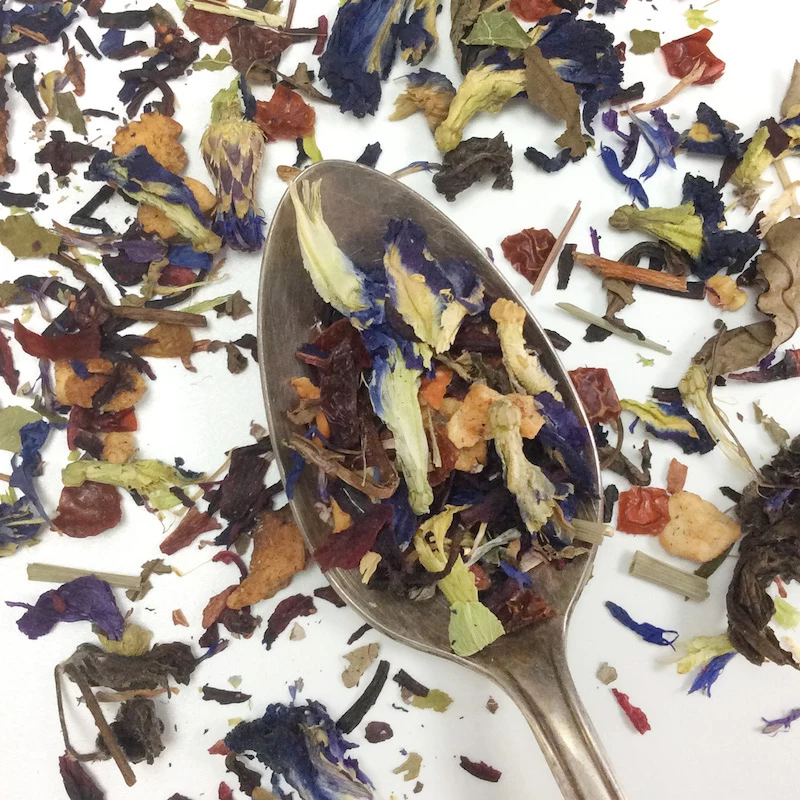
The Famous Blue Latte
This is where the powder shines. A common mistake is just dumping the powder into milk, which leads to clumps. Here’s the trick: To make a perfect blue latte, whisk about one teaspoon of powder with a tiny splash of hot water in your mug first. Mix it into a smooth, lump-free paste. Then, pour in about 8 ounces of steamed milk (dairy or non-dairy both work great!) and sweeten to your liking. Done.
Vibrant Blue Rice
This is a showstopper at dinner parties and is surprisingly easy. Just toss 10-15 whole dried flowers into the pot with your water and rice before you start cooking. As the rice cooks, it will absorb the blue color. Once it’s done, just pick out the steeped flowers. It gives the rice a gorgeous, subtle blue-gray tint without really changing the flavor. (A little squeeze of lime at the end will turn it purple!)
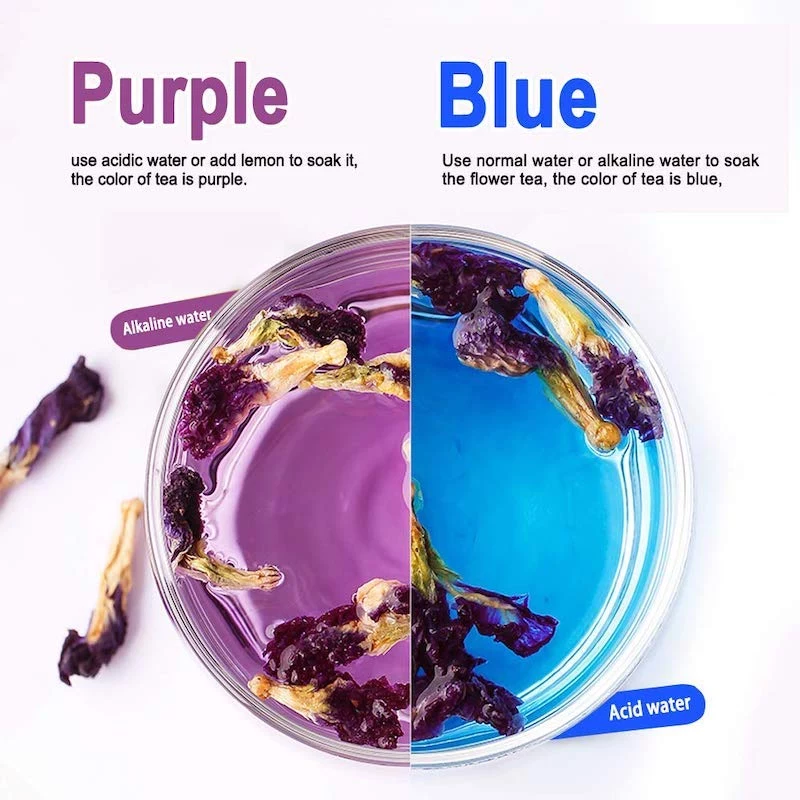
Color-Changing Cocktails
This is where you can really wow your friends. Make a strong tea (either hot- or cold-brewed) and let it cool completely. Use this blue tea as a base for a cocktail. It works especially well with clear spirits like gin or vodka. Pour the spirit and the blue tea over ice, then top it with a citrusy mixer like lemonade or sour mix right at the table. Watching a G&T go from blue to pink is always a hit.
Just a final thought… while this flower has a long history in traditional medicine for its antioxidant properties, I’m a food lover, not a doctor! I just adore it for its incredible color and the story behind it. So have fun, experiment, and enjoy adding a little bit of magic to your day.
Inspirational Gallery
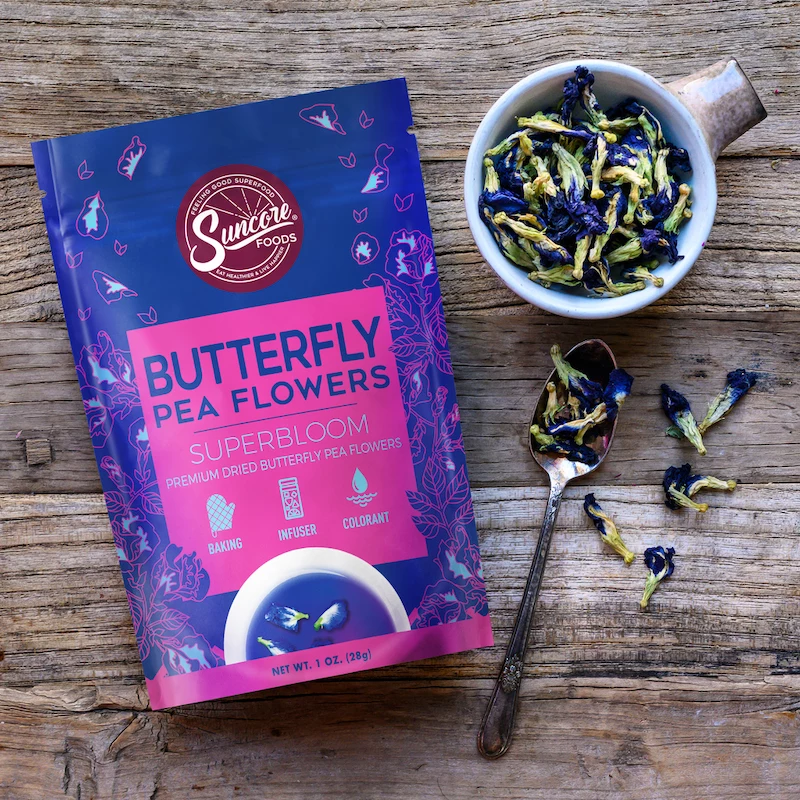
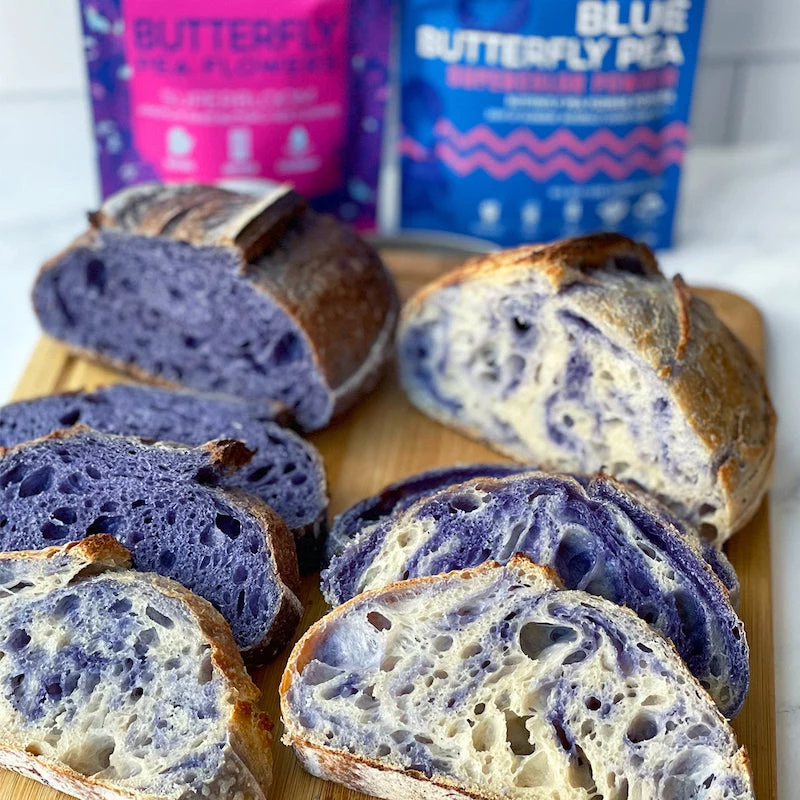
Whole Dried Flowers: Offer a more subtle, nuanced flavor and a beautifully clear infusion. The brewing process itself is a lovely visual ritual. Ideal for hot or cold teas where clarity is key.
Fine Powder: Instantly dissolves for a much more potent, opaque color. Perfect for lattes, smoothies, and baking. Brands like Suncore Foods® offer super-fine powders that blend seamlessly.
Choose flowers for delicate infusions and powder for powerful, colorful creations.
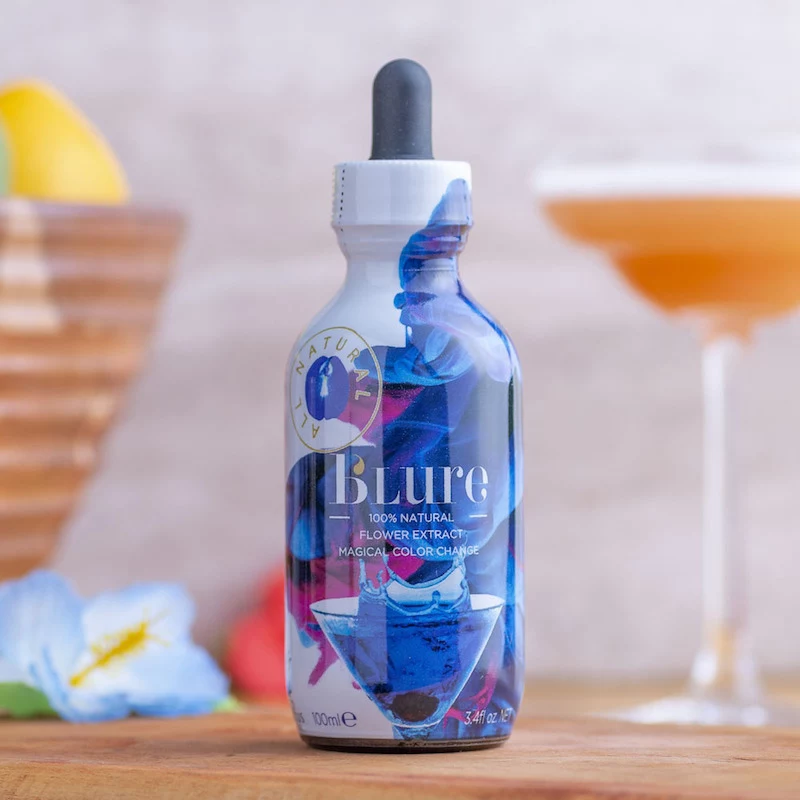
Beyond the visual spectacle, what does butterfly pea tea actually taste like? On its own, the flavor is surprisingly subtle and earthy. Many compare it to a very light, woody green tea, with faint vegetal notes. It’s not a flavor powerhouse, which is its strength—it easily absorbs other tastes like citrus, ginger, or lemongrass without clashing.
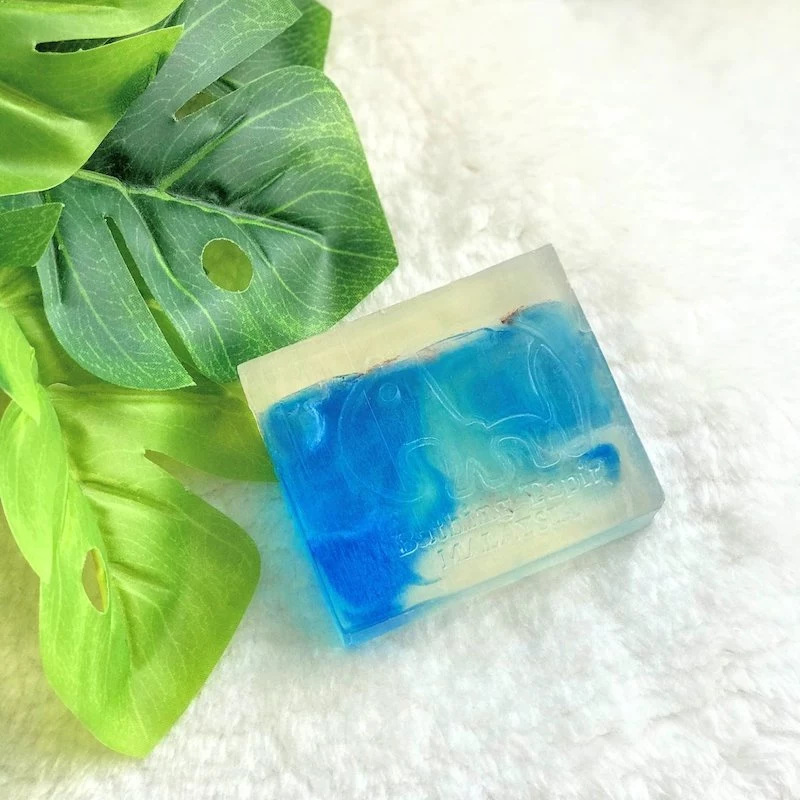
- Brew a strong batch of butterfly pea tea and let it cool completely.
- Pour the blue tea into an ice cube tray.
- For a fun twist, drop a single raspberry or a mint leaf into each cube before freezing.
- Use these cubes in lemonade or tonic water and watch the drink slowly change color as they melt.
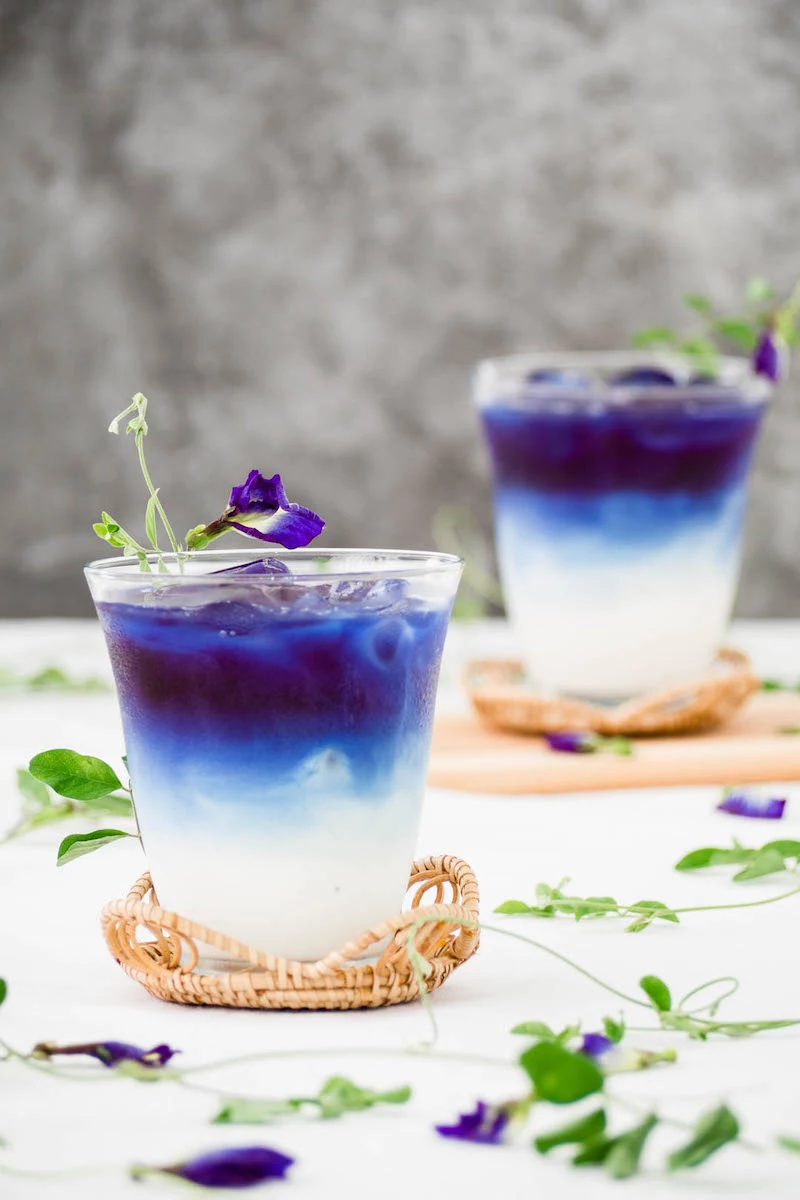
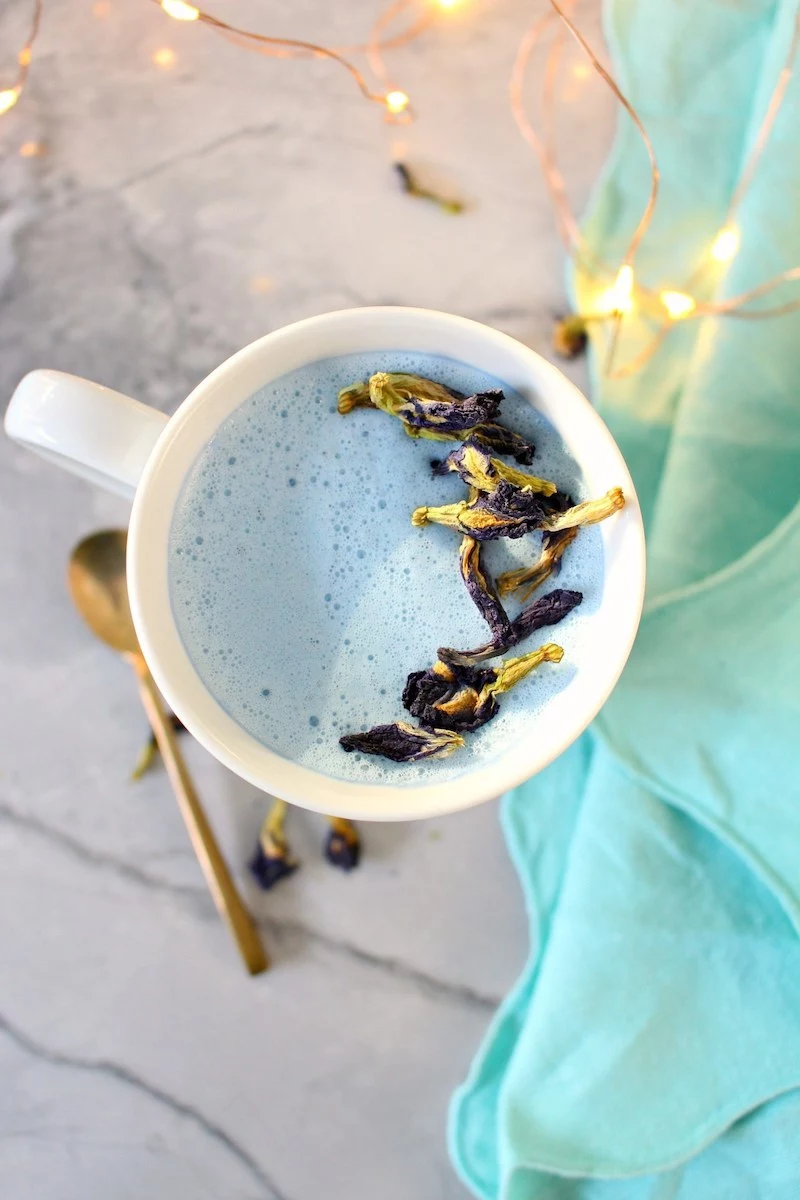
In traditional Ayurvedic medicine, the butterfly pea flower, known as ‘Shankhpushpi’, has been used for centuries as a ‘medhya rasayana’—a brain tonic believed to enhance memory and reduce mental fatigue.
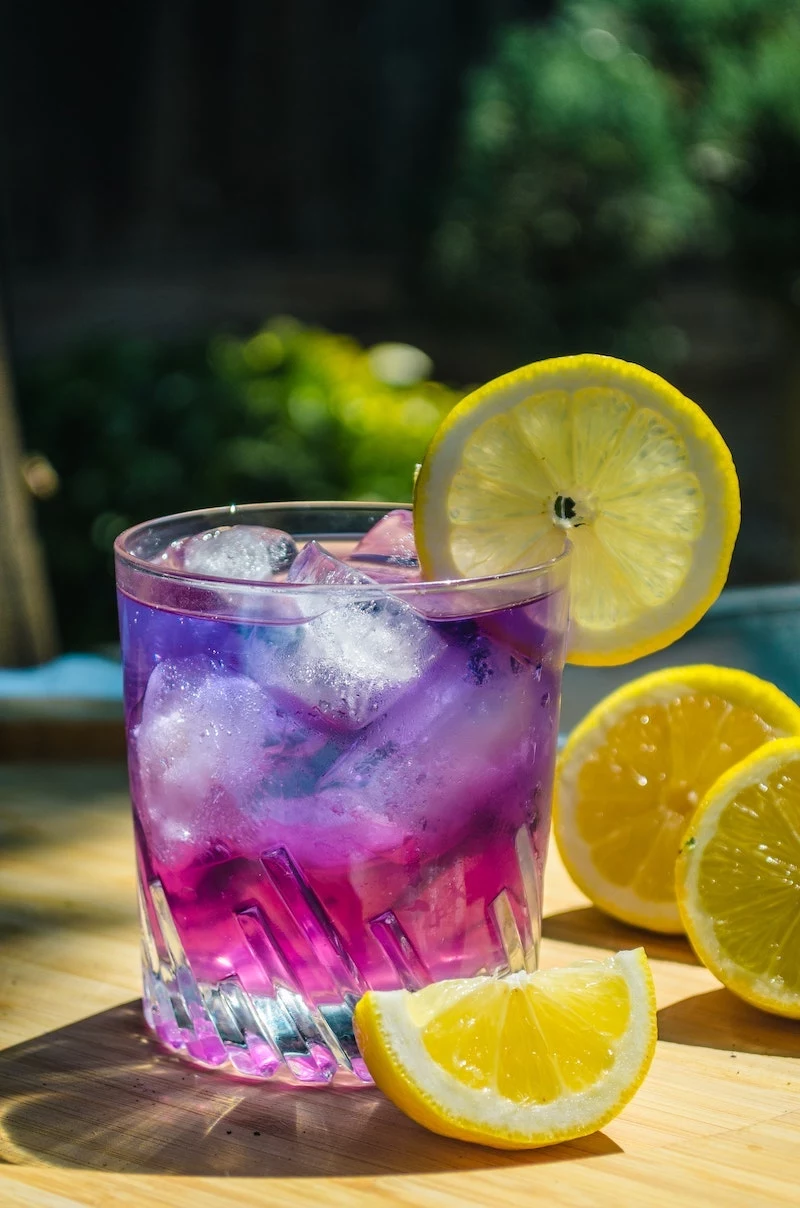
A common mistake: Using boiling water. Just like with delicate green teas, boiling water (100°C or 212°F) can scorch the dried flowers, resulting in a slightly bitter taste and a duller color. For the most vibrant blue and smoothest flavor, use water that is hot but not boiling, around 90°C or 195°F.
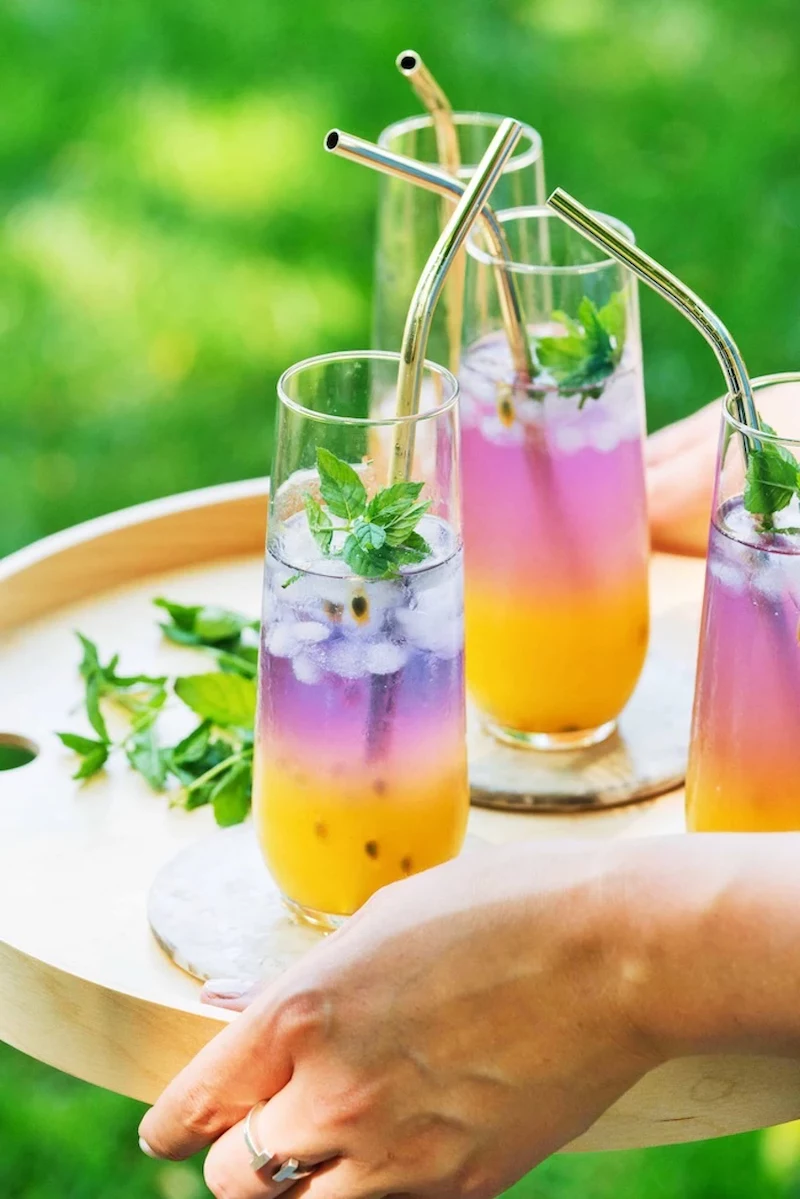
How do I keep my butterfly pea flowers or powder from losing their punch?
Light and air are the enemies of its vibrant color. Store your dried flowers or powder in a completely airtight container, like a metal tin or an amber glass jar. Keep it tucked away in a cool, dark pantry. Avoid clear glass jars on a sunny shelf, as UV exposure will degrade the anthocyanin pigments over time, turning your brilliant blue into a disappointing grey.
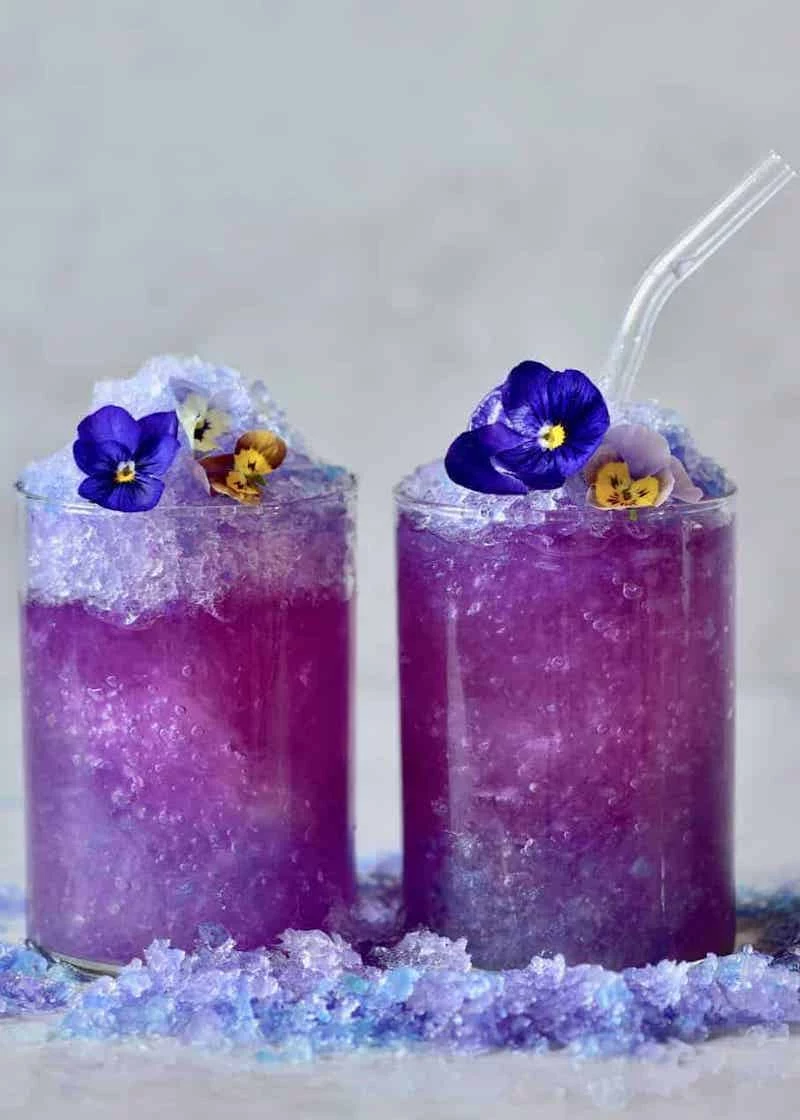
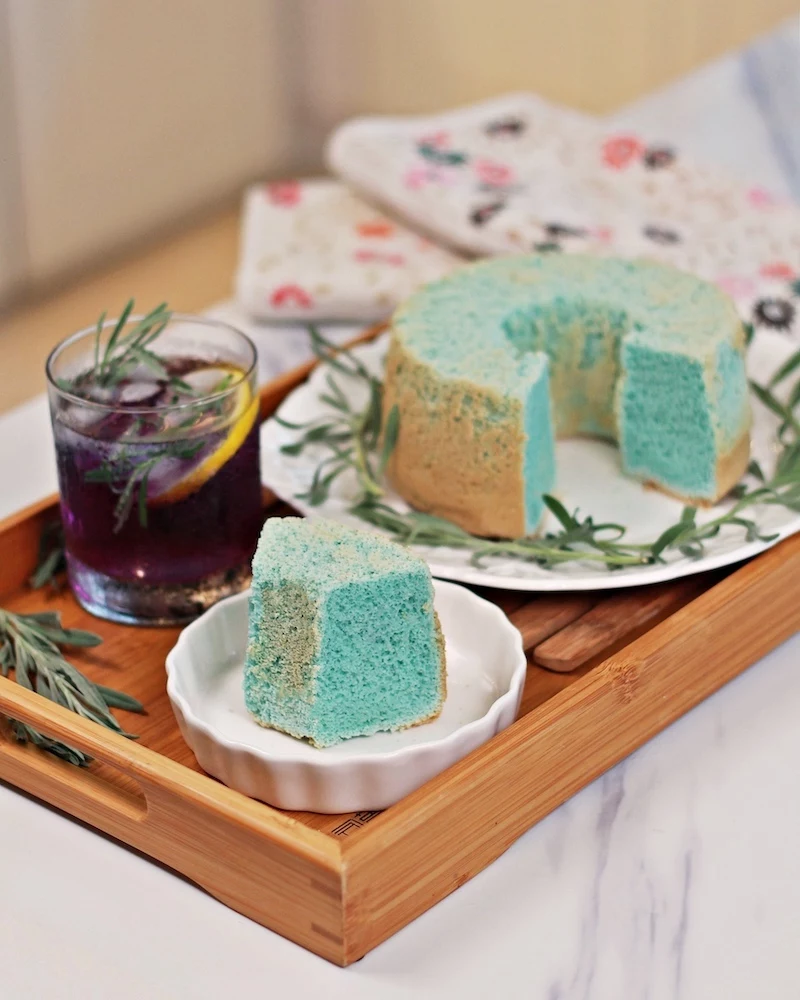
Create a magical cocktail base with a color-changing simple syrup. Here’s how:
- Combine one cup of sugar and one cup of filtered water in a saucepan.
- Add a large handful of dried butterfly pea flowers (or 2 teaspoons of powder).
- Heat gently, stirring until the sugar dissolves completely. Do not boil.
- Let it steep off the heat for 15-20 minutes until a deep blue color is achieved.
- Strain through a fine-mesh sieve and store in a sealed bottle in the refrigerator for up to two weeks.
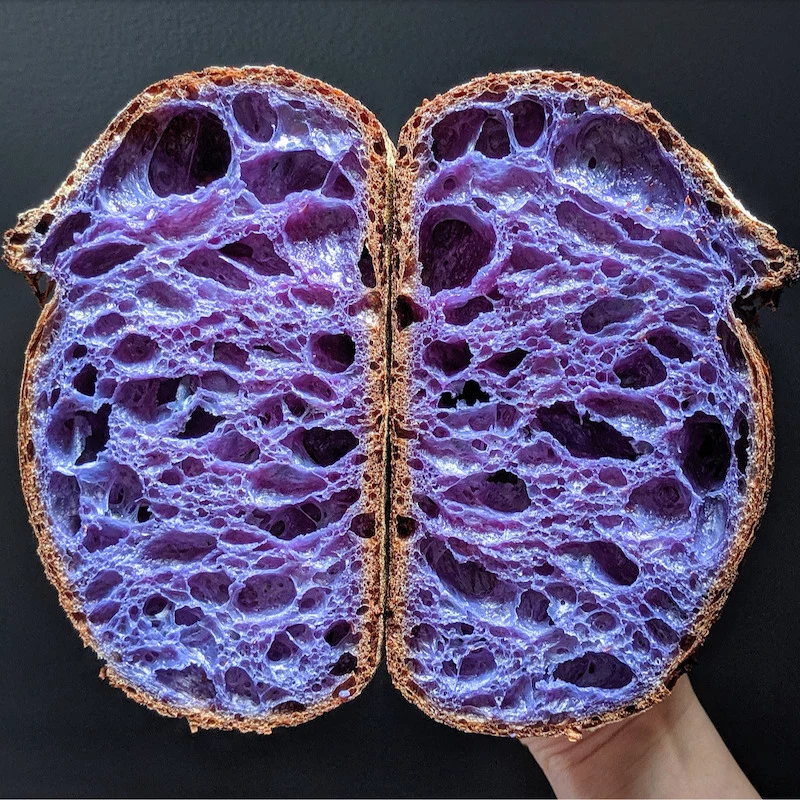
In Malaysia, the flower is the star of a traditional dish called Nasi Kerabu.
This isn’t just a gimmick; it’s a culinary staple. Rice is cooked in a butterfly pea flower infusion, giving it a stunning azure hue. It’s then served with dried fish or fried chicken, crackers, pickles, and an assortment of fresh local herbs. It’s a perfect example of how the flower has been used for its beauty in everyday food for generations.
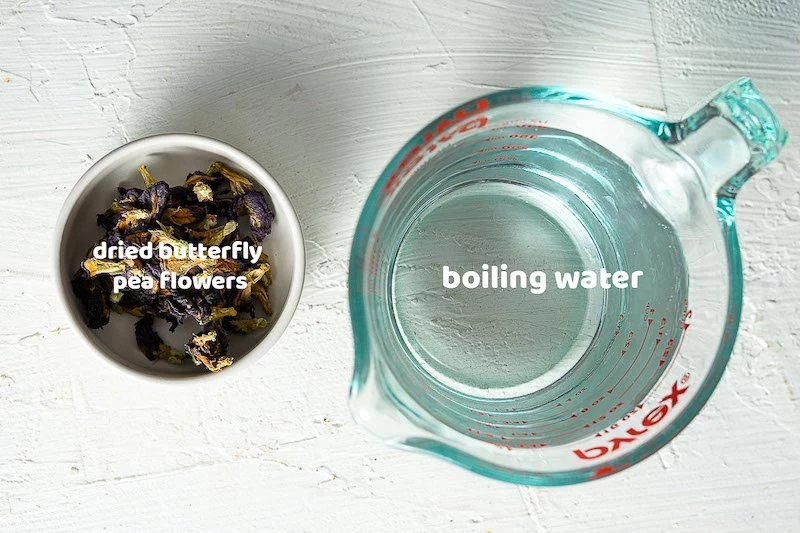
- Create a stunning, multi-toned effect in a single glass.
- Impress guests with a drink that looks like a sunset… or a galaxy.
The secret is density. A liquid with high sugar content (like a fruit syrup or purée) is heavier than one with low sugar (like tea or soda water). To create layers, pour the heaviest liquid in first. Then, slowly pour the next liquid over the back of a spoon held against the inside of the glass. The spoon disperses the liquid gently, allowing it to float on top instead of mixing.
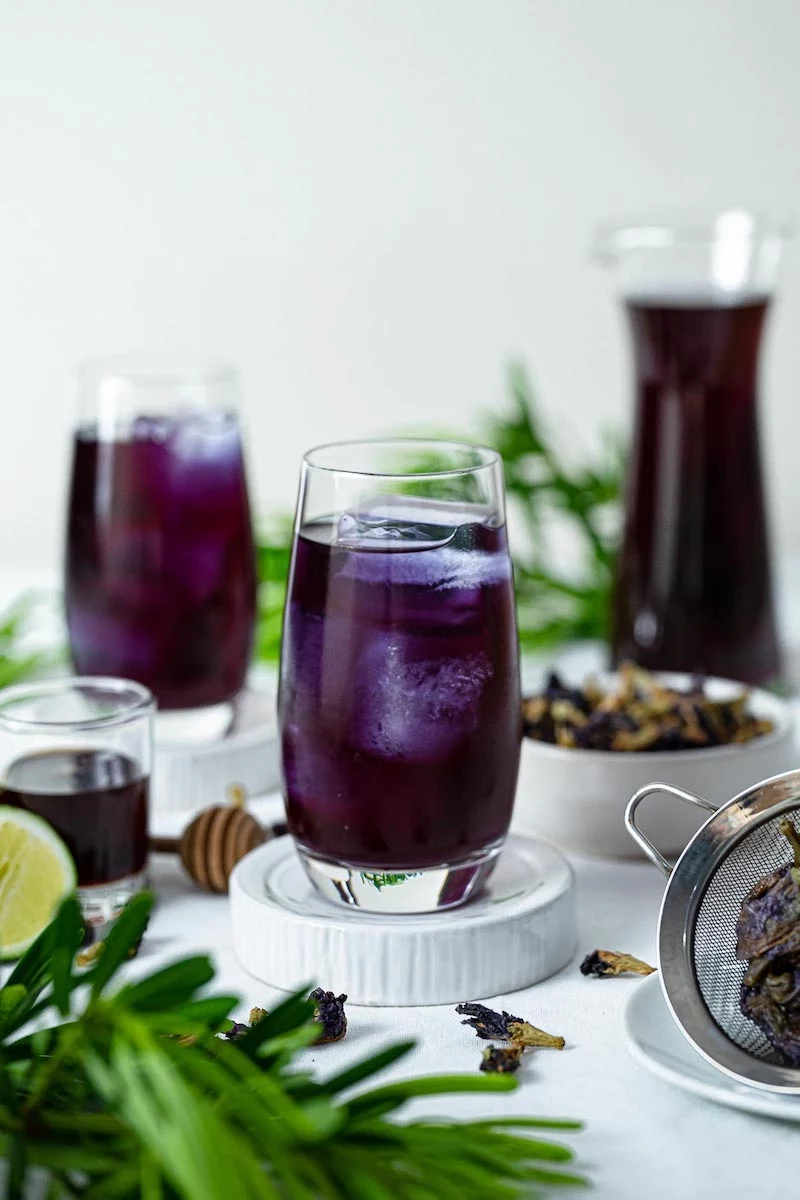
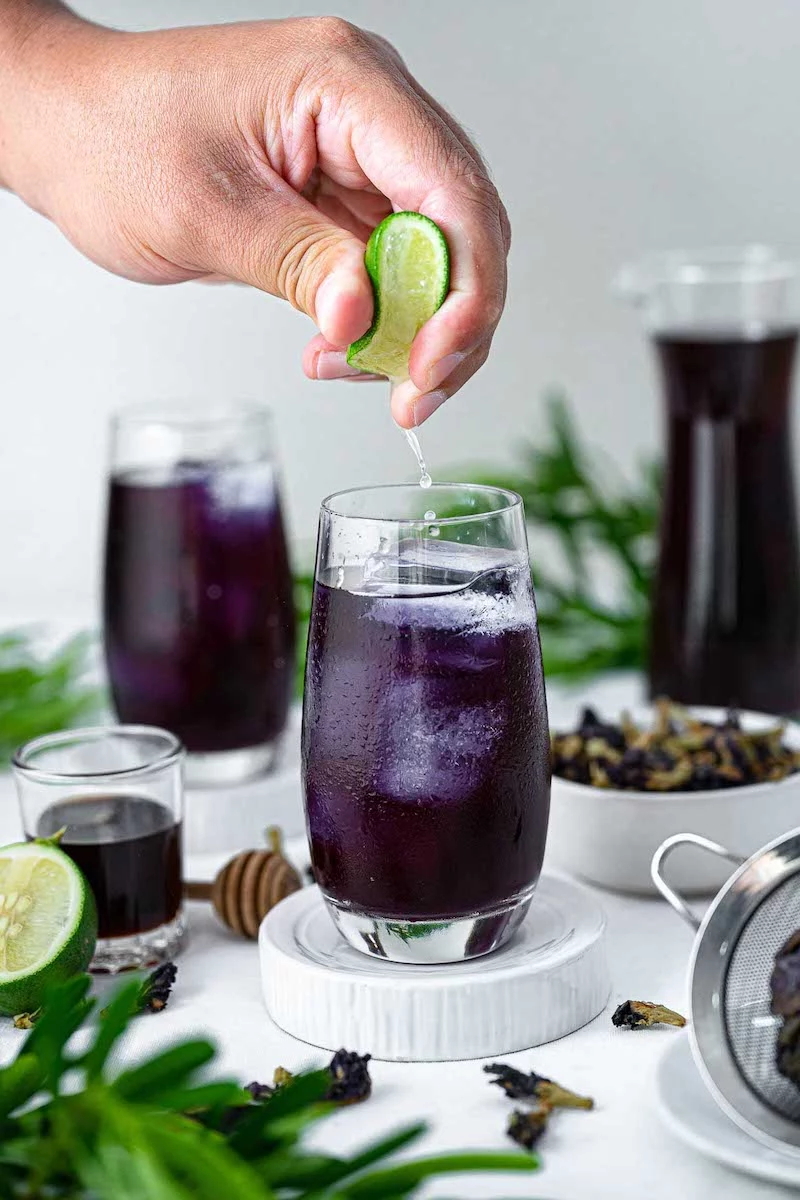
The antioxidant benefits aren’t just for drinking. For a soothing skin treat, brew an extra-strong, concentrated infusion of butterfly pea flower tea. Once cooled, mix a tablespoon of this blue liquid into a simple bentonite clay or honey face mask. The added antioxidants help calm and brighten the skin.
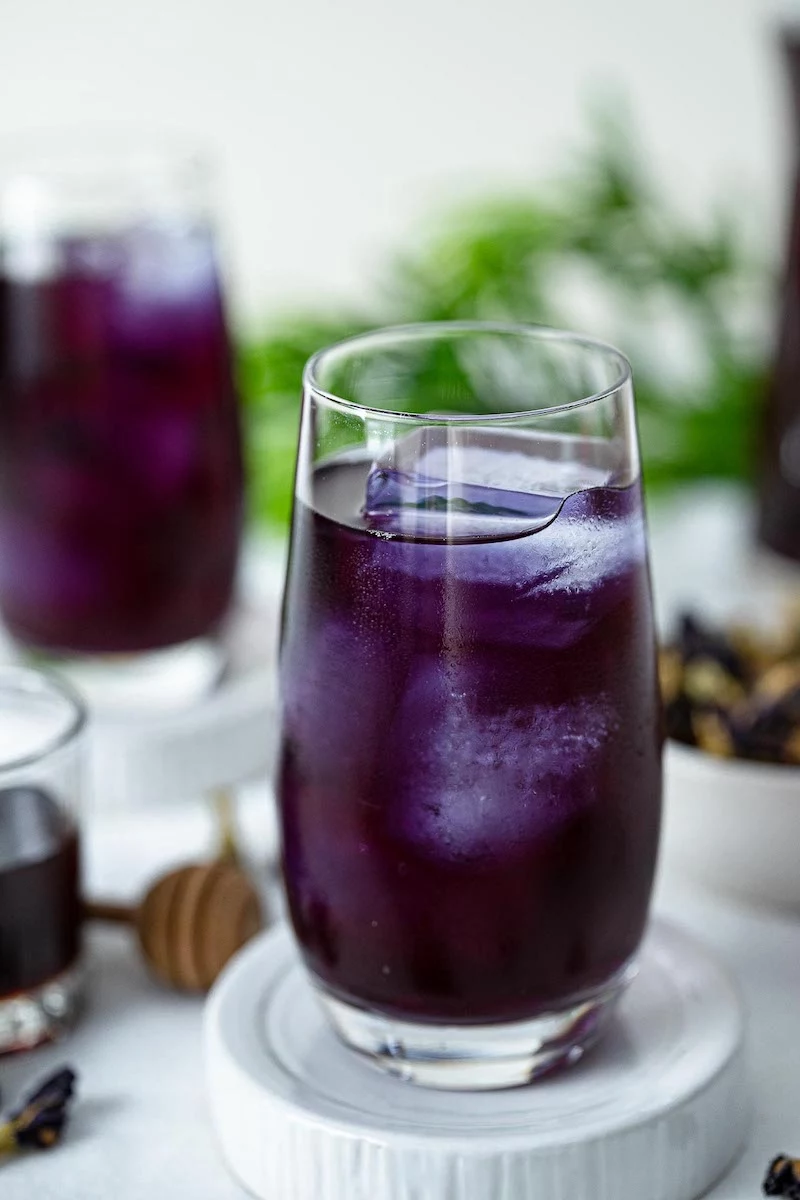
- Get that perfect ‘blue rice’ for an authentic Nasi Kerabu.
- Naturally color homemade pasta or gnocchi dough.
- Create an ethereal blue panna cotta or cheesecake without artificial dyes.
- Add a teaspoon of powder to your sourdough starter for a beautiful lavender-hued crumb.
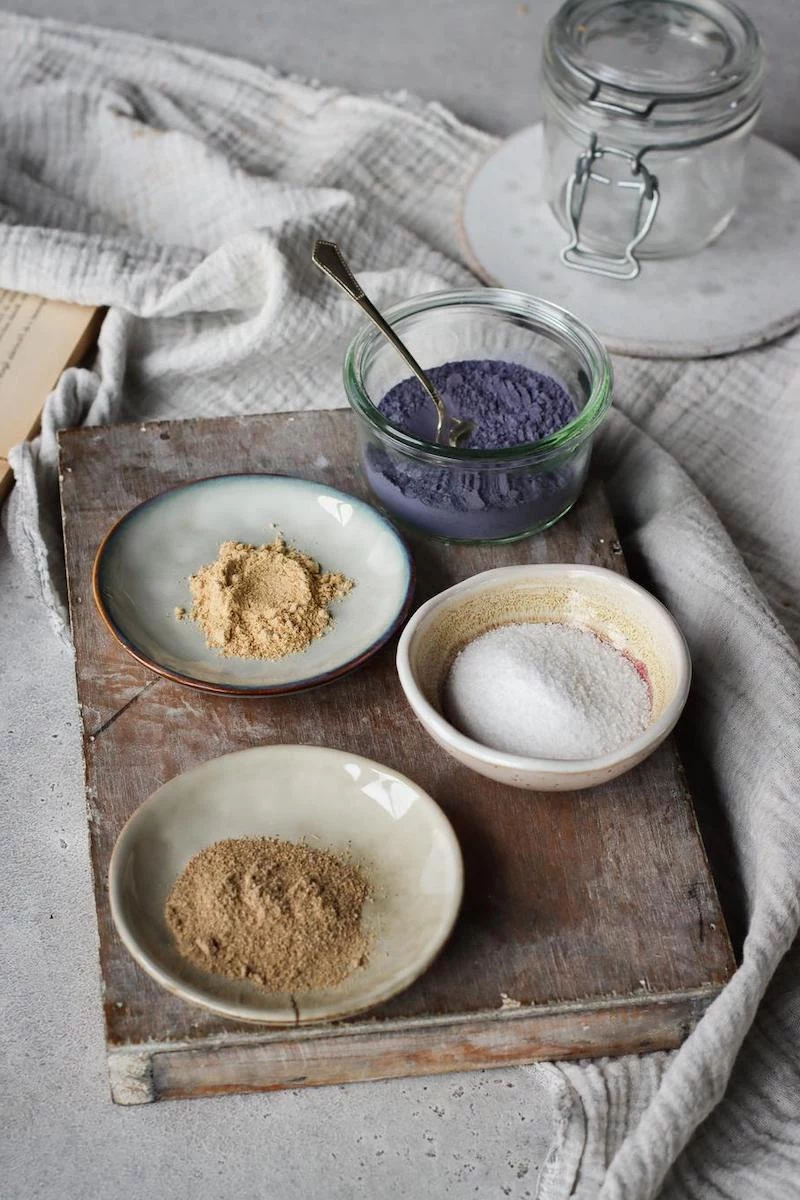
For Purple & Pink (Acids): Lemon juice, lime juice, tonic water (which contains citric acid), hibiscus tea, passionfruit, and even a splash of apple cider vinegar will shift the color to purple and magenta.
For Green & Yellow (Alkaline): A tiny pinch of baking soda will turn the tea greenish. While not ideal for drinks, this is the effect you might see in certain baked goods that use it as a leavening agent.
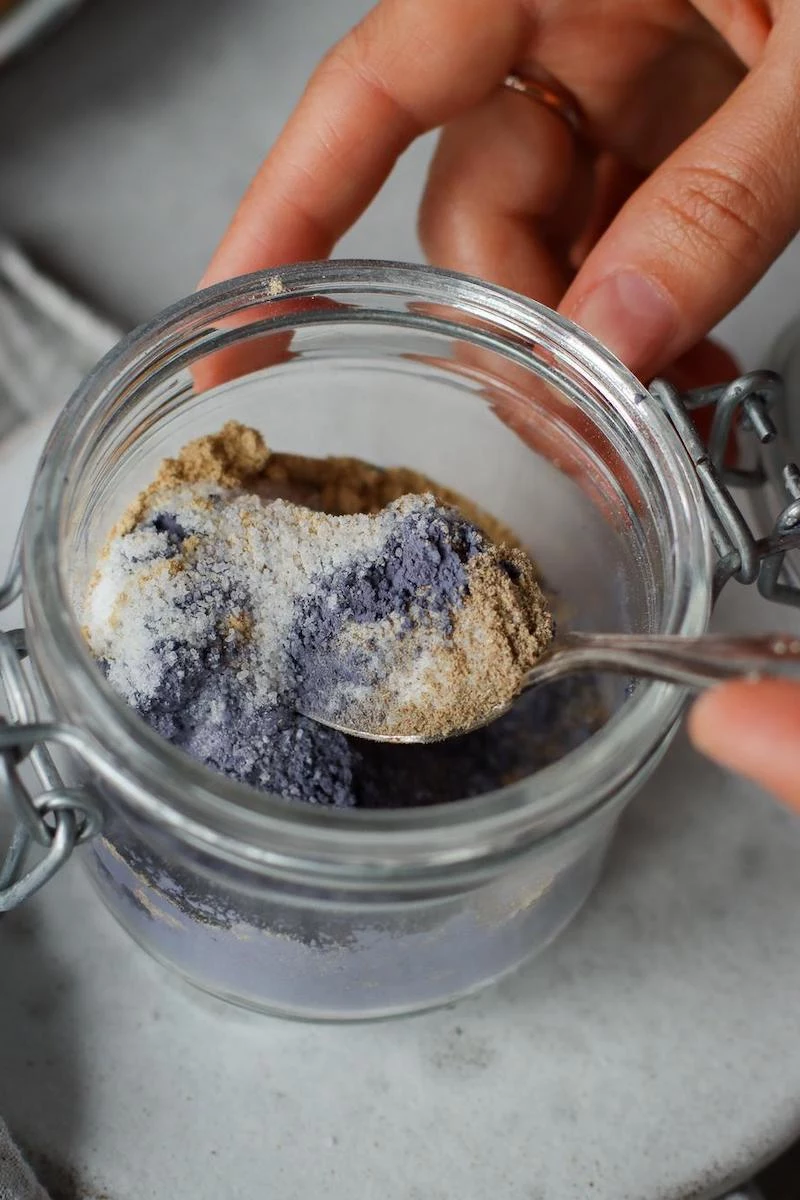
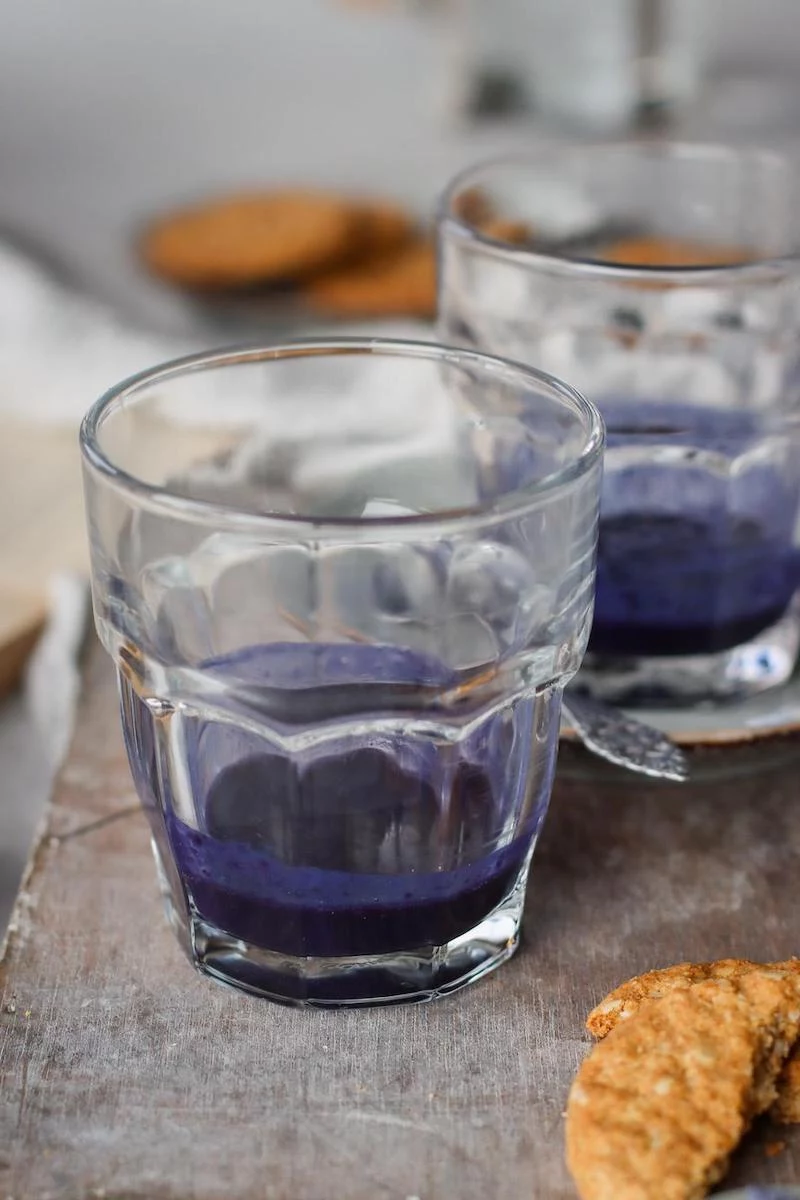
The unique stability of butterfly pea’s color comes from its specific type of anthocyanins, a group of molecules called ‘ternatins.’ Unlike the anthocyanins in blueberries or red cabbage, ternatins are more resistant to heat and light, which is why the flower yields such a reliably vivid blue.
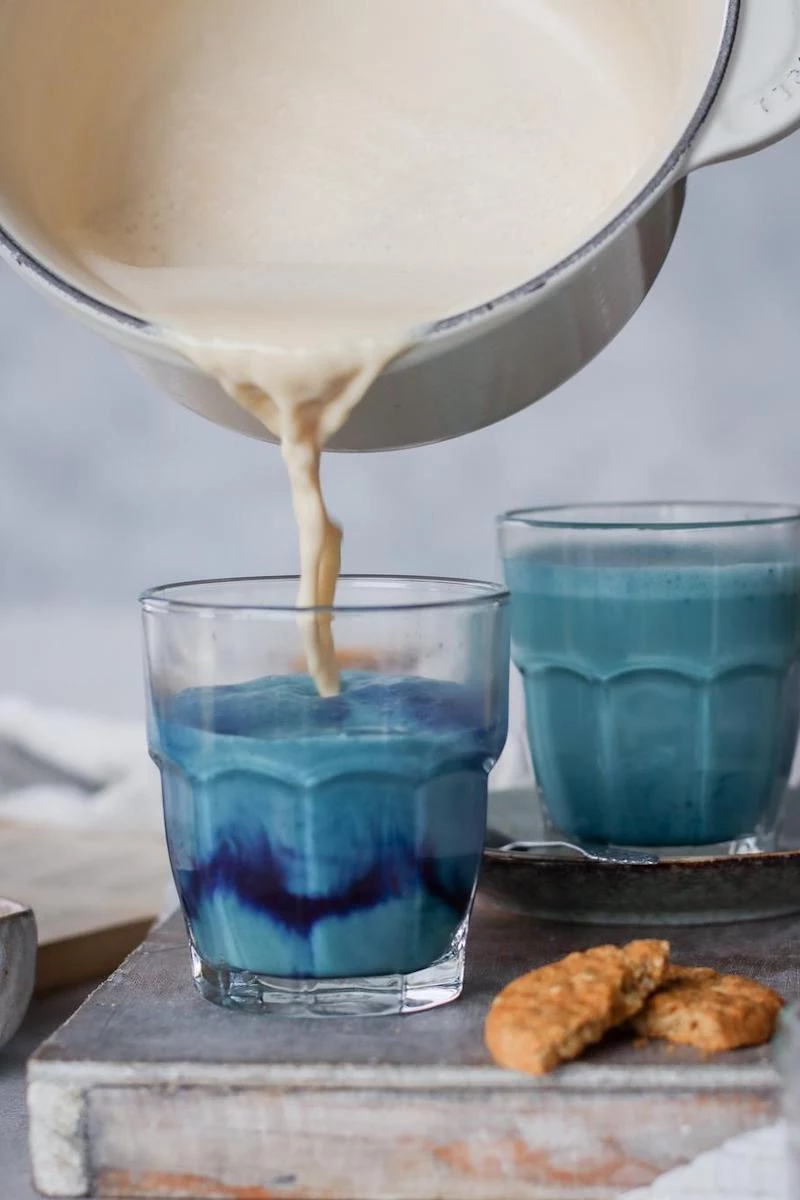
Can I grow my own butterfly pea flowers at home?
Absolutely! The plant, Clitoria ternatea, is a tropical perennial vine, but it can be grown easily as an annual in cooler climates. It loves full sun and well-draining soil and will climb any trellis or fence you provide. You can buy seeds from online suppliers like Baker Creek Heirloom Seeds or local garden centers specializing in unique botanicals. It’s a joy to watch the electric blue flowers unfurl each morning.
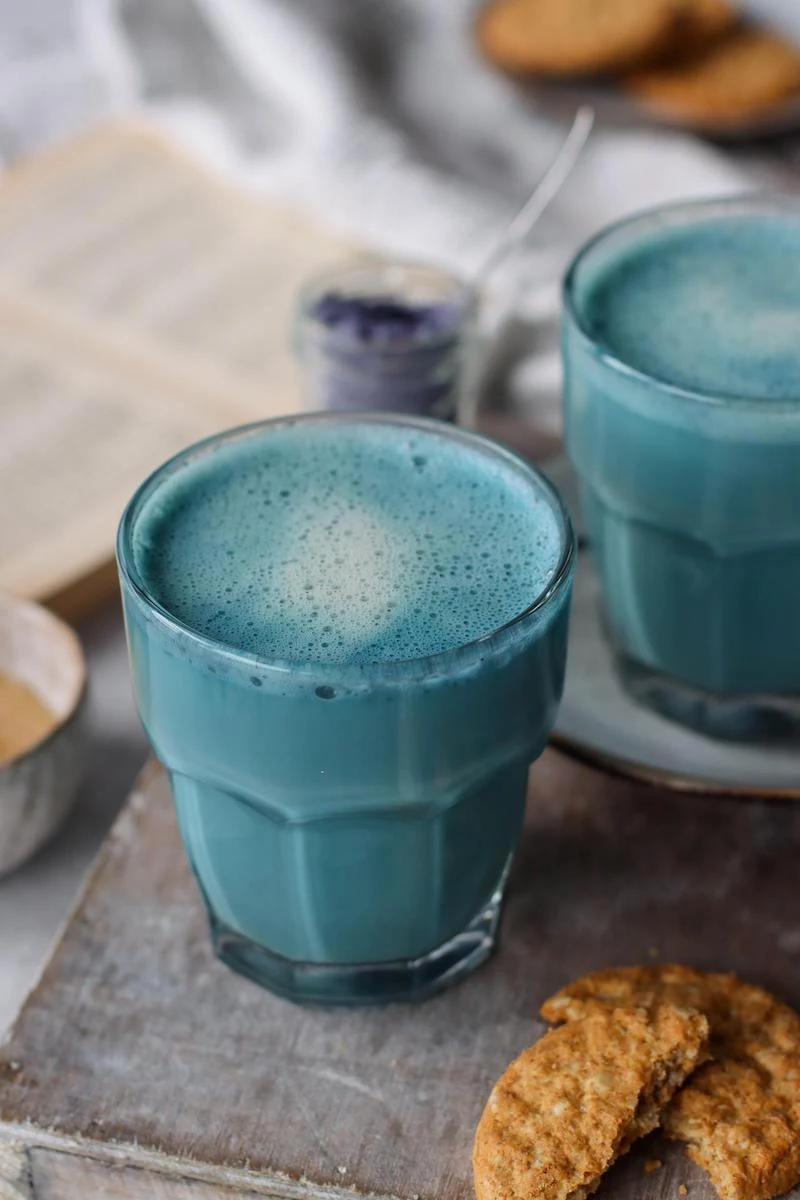
A critical warning for latte lovers: Do not add dairy milk to an already-acidified butterfly pea tea. The acid that creates that beautiful purple hue will instantly curdle the proteins in cow’s milk, creating a lumpy, unappealing texture. For a purple latte, use a plant-based milk like oat or almond, or add your dairy milk *before* the squeeze of lemon.
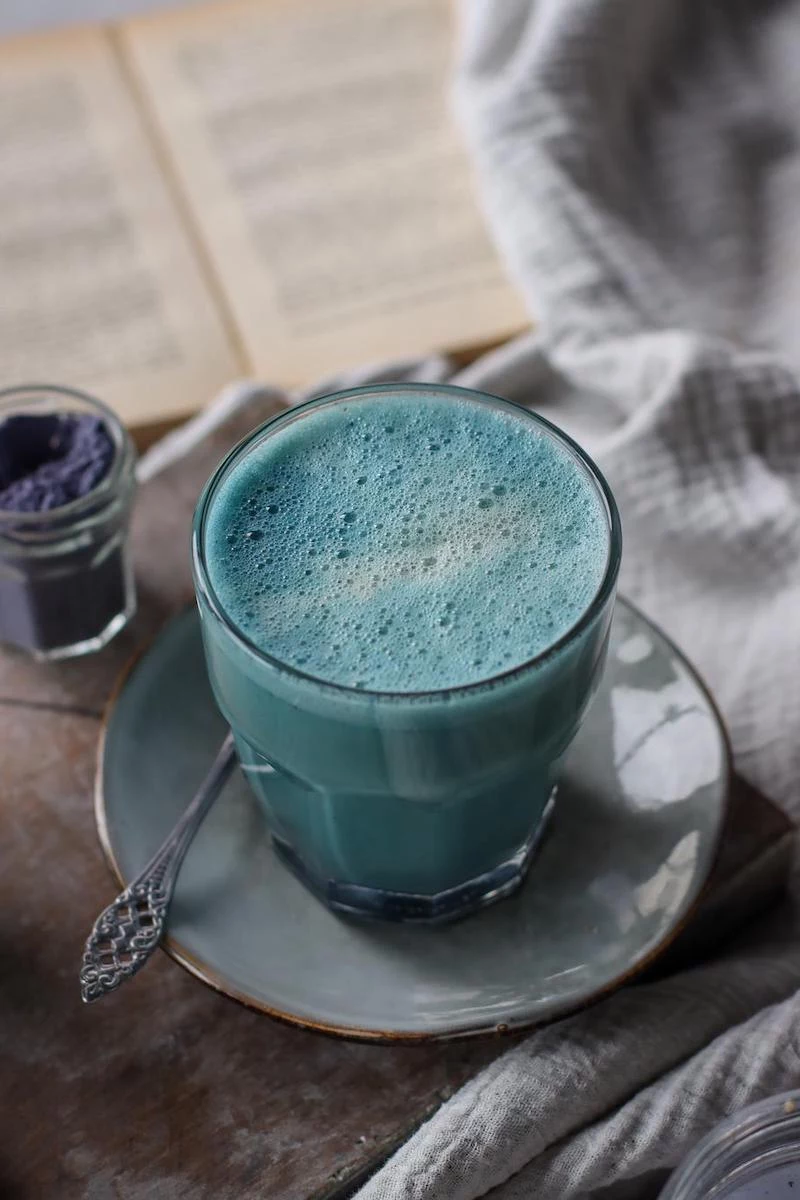
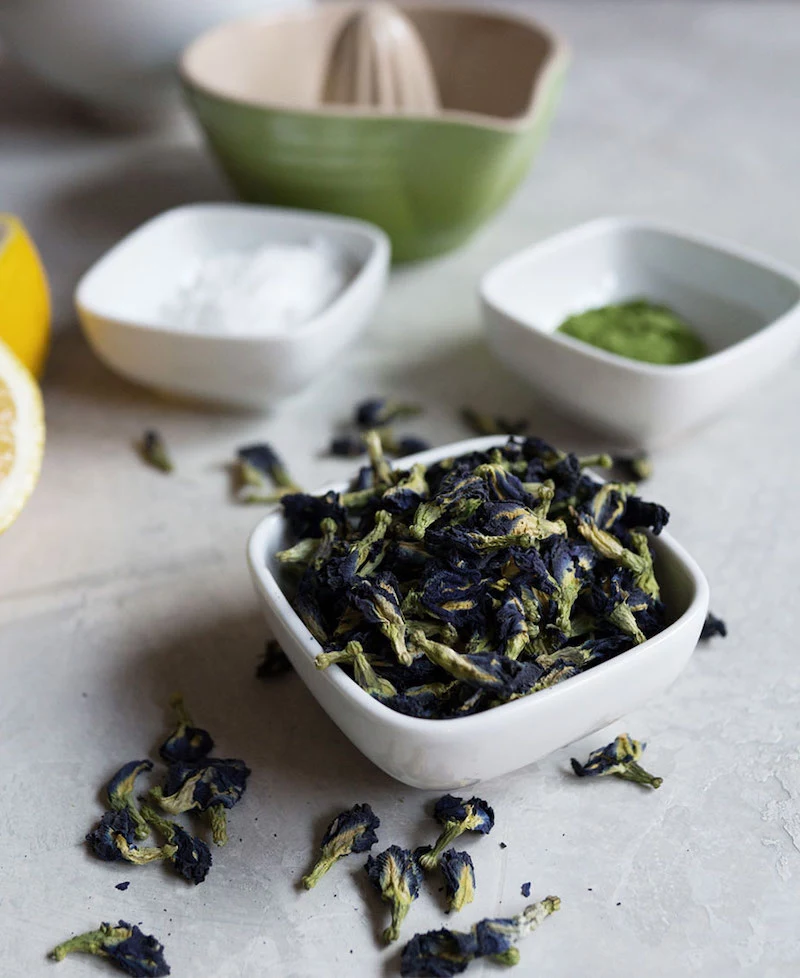
Elevate your home bar by infusing spirits. This works especially well with clear spirits like gin or vodka:
- Place a handful of dried butterfly pea flowers into a clean glass jar.
- Pour 750ml of your chosen spirit over the flowers. Seal the jar tightly.
- Let it infuse for 24 to 48 hours in a cool, dark place, shaking it occasionally. The spirit will turn a deep indigo.
- Strain out the flowers. Now, when you mix the gin with tonic or citrus, the cocktail will magically transform from blue to pink.
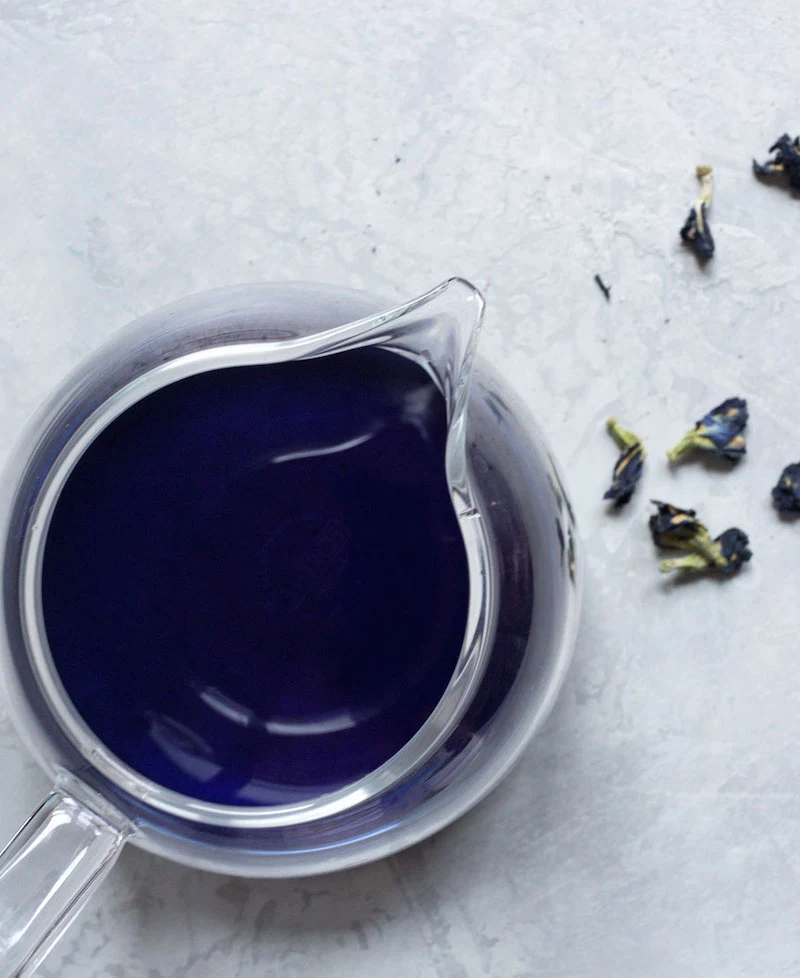
Baking with butterfly pea powder can be tricky due to leavening agents. The alkalinity of baking soda or powder will often turn your blue batter a murky green. The solution? It’s best used in recipes that don’t require rising, like no-bake cheesecake fillings, simple glazes, or buttercream frosting. Add the powder from a brand like Wild Hibiscus Flower Co. at the end for a pop of color without a chemical reaction.
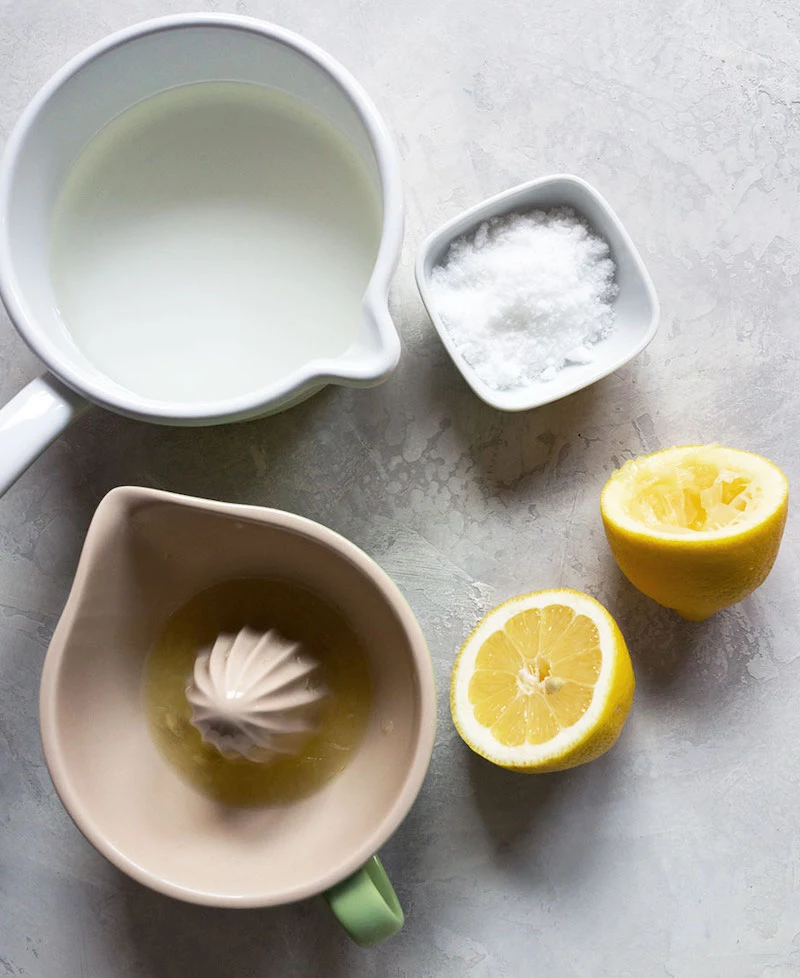
- A cocktail that changes from deep space blue to a swirling nebula pink right before your eyes.
- An absolute showstopper that requires minimal bartending skill.
The trick is frozen acid. Make your base drink with butterfly pea tea. Then, make ice cubes from lemonade or limeade. As the acidic ice cubes melt into the blue drink, they create mesmerizing purple and pink swirls without you having to add a thing.
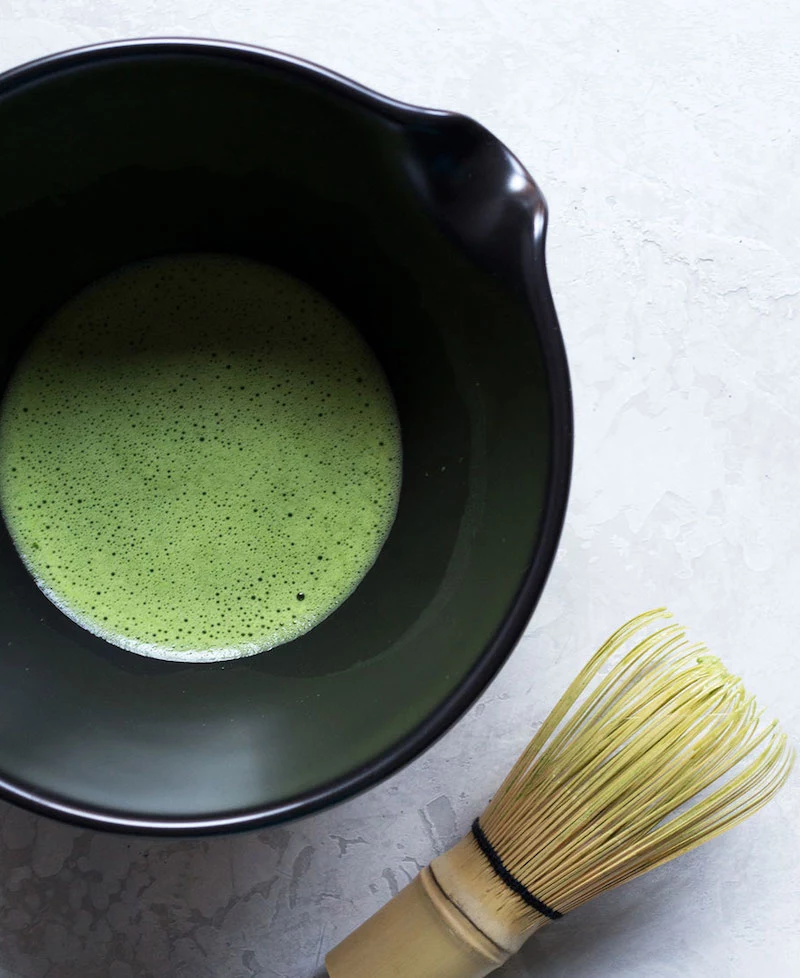
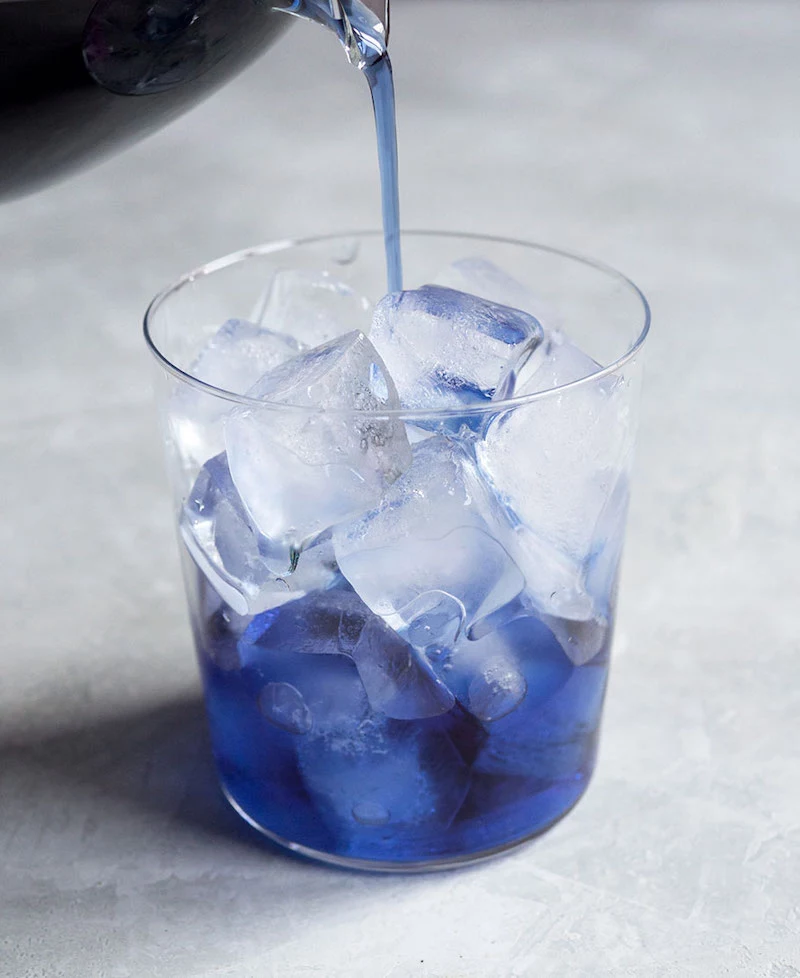
In Thailand, the blue ‘dok anchan’ tea is more than just a drink; it’s a gesture of welcome.
Often sweetened with honey and served over ice with a pandan leaf, it’s a common welcome drink offered to guests at homes, spas, and hotels. It embodies a sense of calm and hospitality, a refreshing respite from the tropical heat.
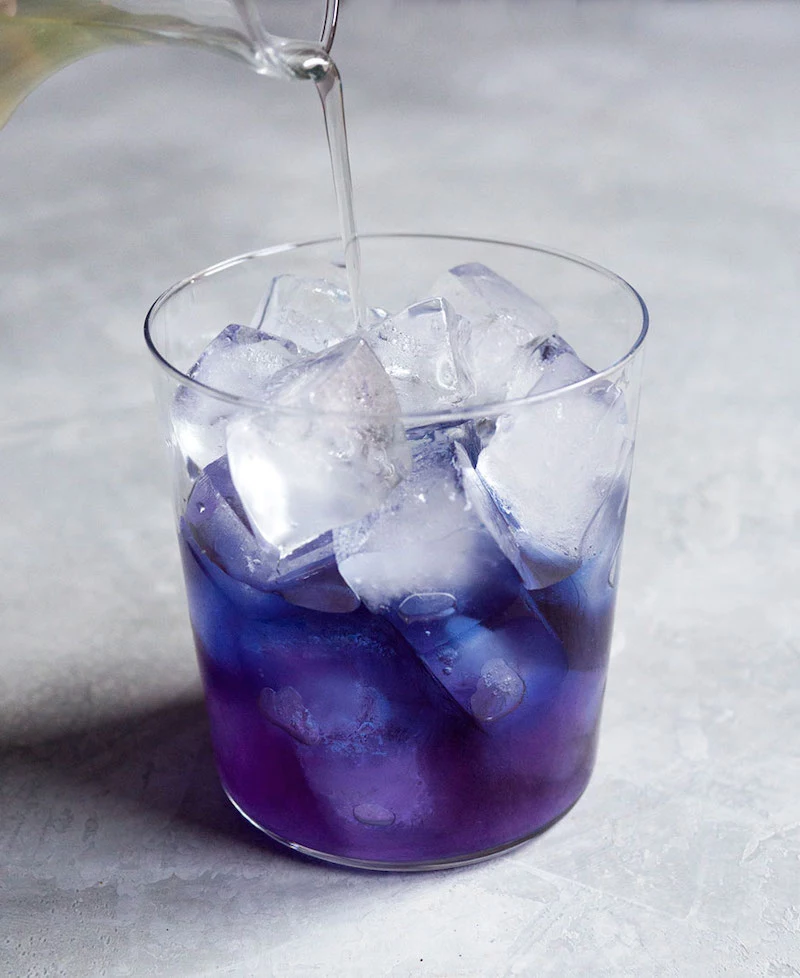
Butterfly Pea & Lemongrass: This is a classic Thai pairing. The earthy notes of the flower are lifted by the bright, citrusy aroma of lemongrass.
Butterfly Pea & Ginger: The spicy warmth of fresh ginger cuts through the mildness of the tea, creating a zesty and invigorating brew.
Butterfly Pea & Lychee: For a sweet, floral, and tropical iced tea, the fragrant sweetness of lychee is a perfect match.
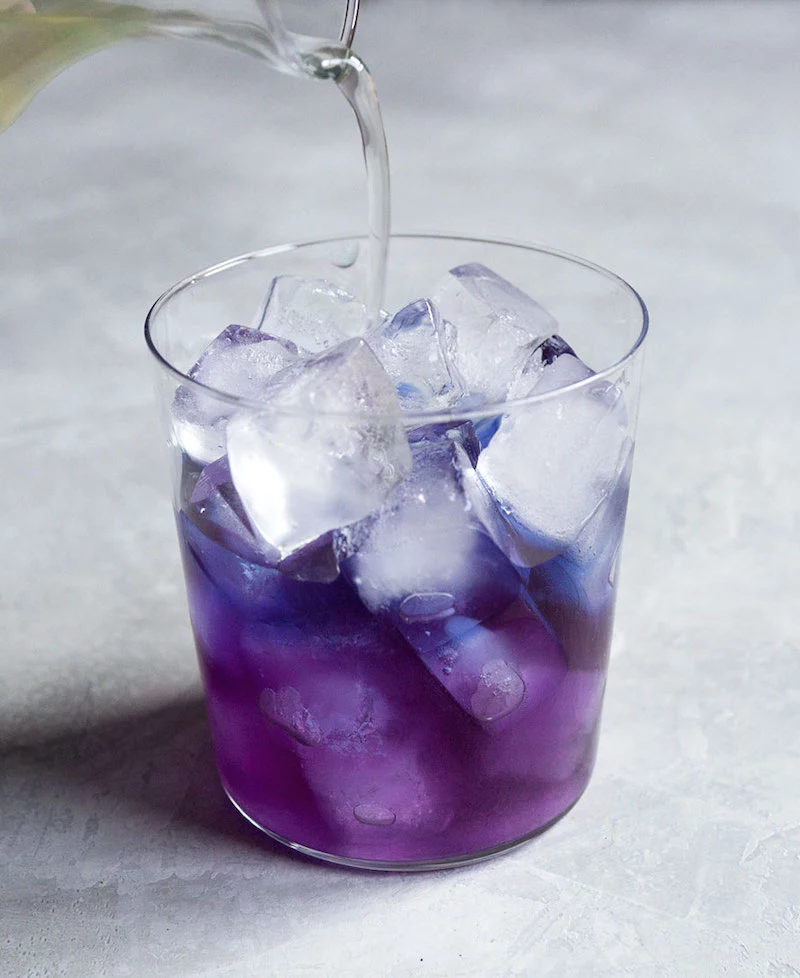
Don’t just think drinks! A strong, concentrated butterfly pea infusion can be used as a stunning natural food dye. Try adding it to the water when making sushi rice for a beautiful blue base, or use it to color homemade pasta dough. For a Vietnamese-inspired twist, create vibrant blue-tinted rice paper for fresh spring rolls. It adds incredible visual appeal with almost no impact on the final taste.
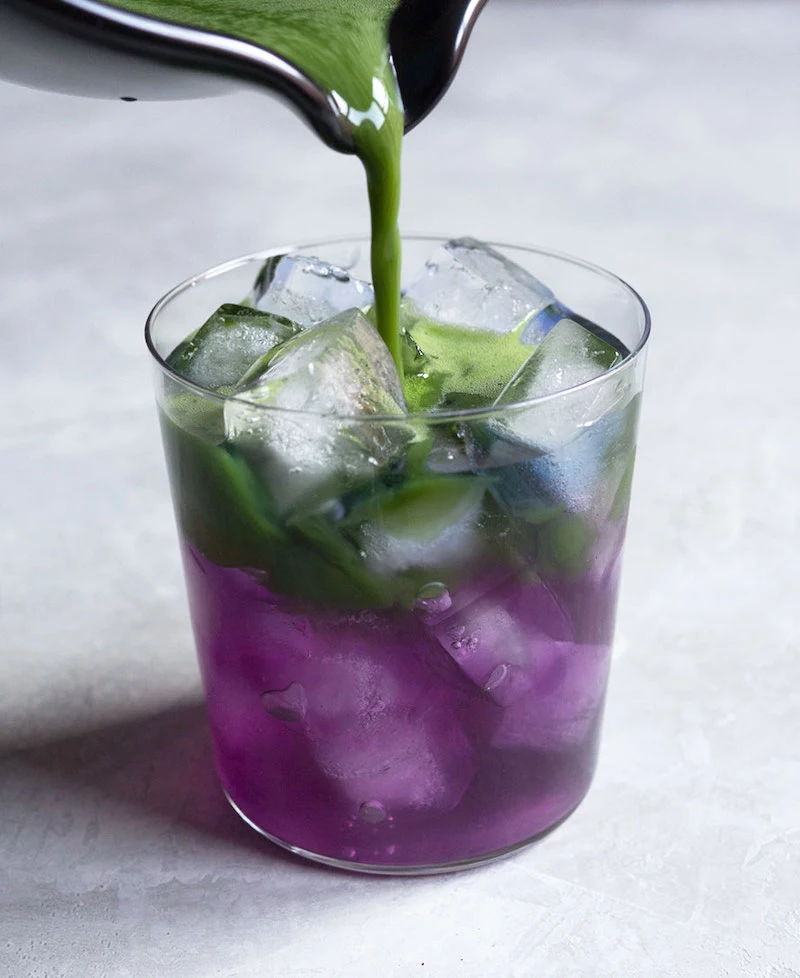
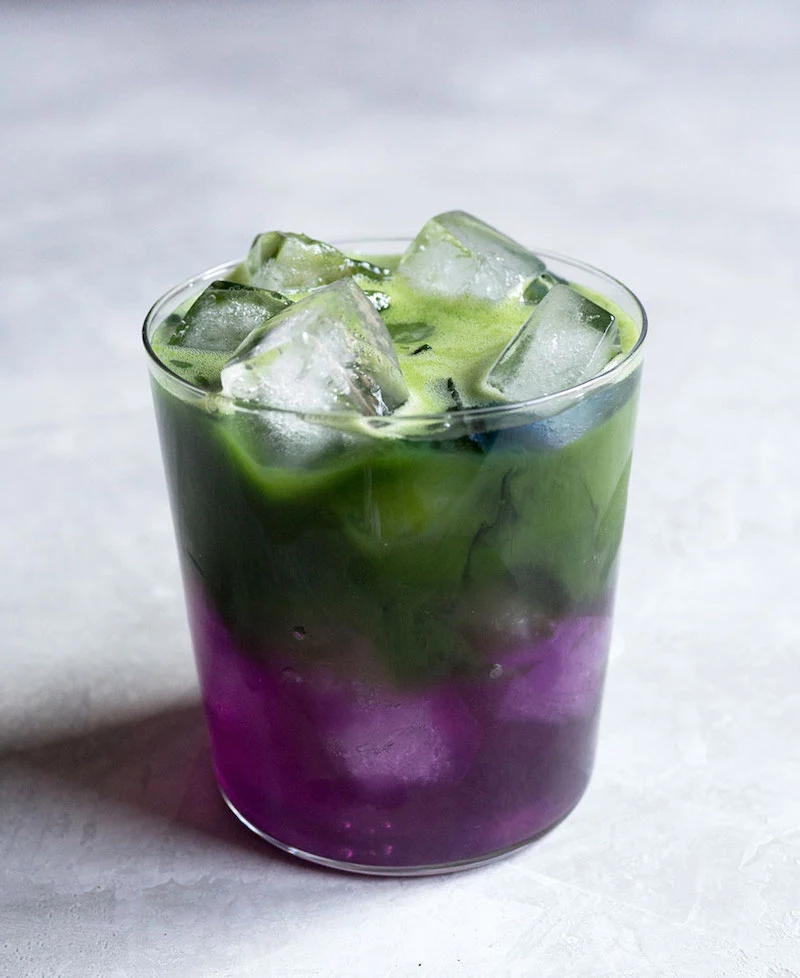
I’m watching my budget. What’s the most economical way to buy it?
While powders from specialty brands are convenient, buying whole, dried flowers in bulk from online Asian markets or dedicated herb suppliers is often far more cost-effective. You might pay more upfront for a larger bag, but the price per gram is significantly lower, and a little goes a long way. A 100g bag of dried flowers can last for dozens and dozens of infusions.
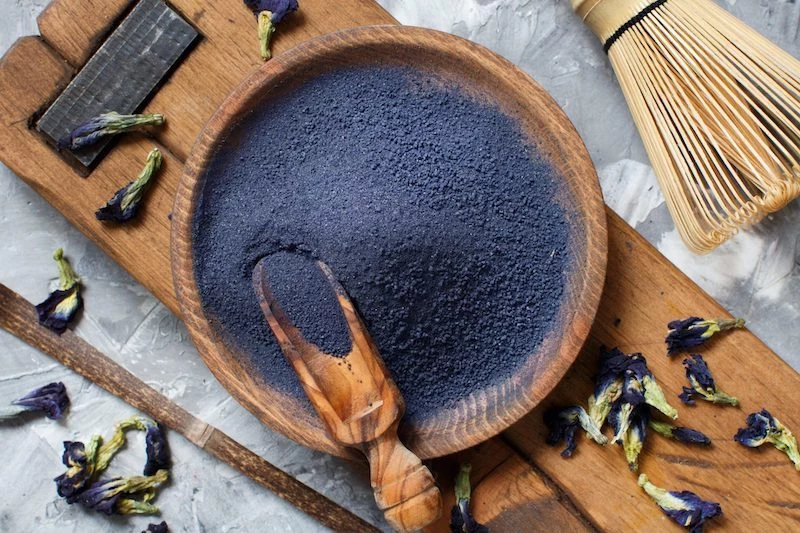
While generally considered very safe and consumed for centuries, some people report mild nausea or digestive upset if they consume it in very large quantities. As with any herbal product, it’s wise to start with a small amount to see how your body reacts. It’s always best to enjoy it in moderation.
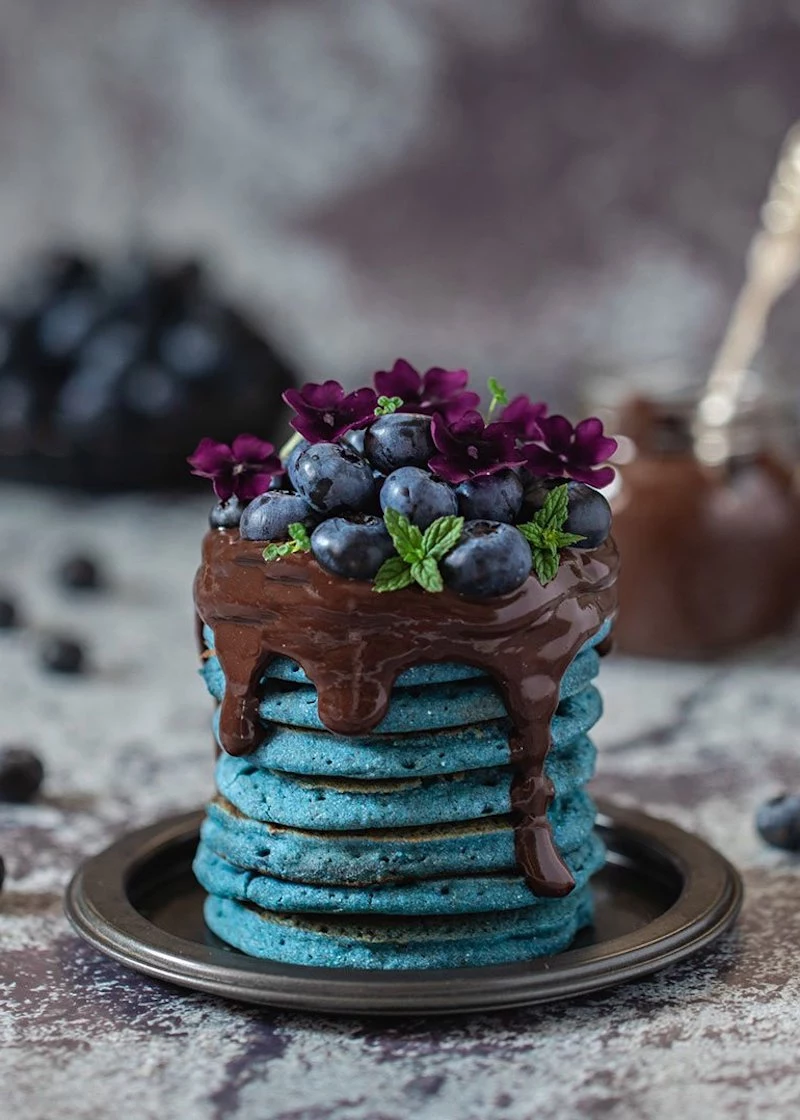
A 2019 review in the *Journal of Functional Foods* highlighted that butterfly pea is rich in delphinidin-based anthocyanins, noting their potential role in glycation inhibition, a process linked to skin aging.
In simple terms, the specific antioxidants in the flower may help protect the skin’s natural proteins, like collagen, from sugar-related damage, which contributes to its reputation in traditional beauty remedies.
Your secret weapon for flavorless coloring: Unlike beets (earthy), turmeric (peppery), or spirulina (sea-like), butterfly pea flower adds intense color with almost no discernible flavor. This makes it the perfect natural food dye when you want the visual ‘wow’ without altering the taste of your delicate frostings, custards, or white chocolate.










